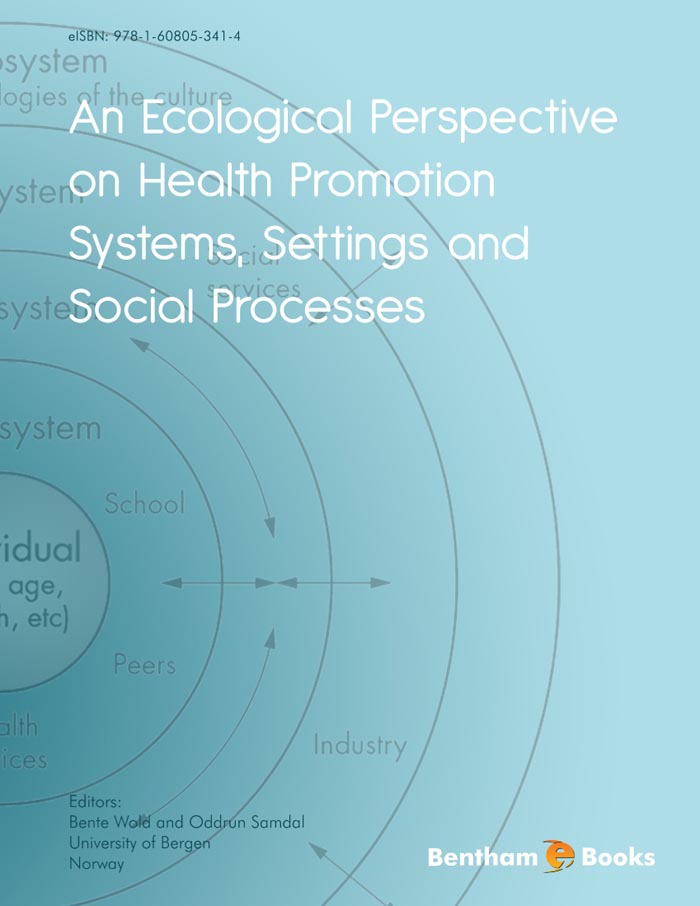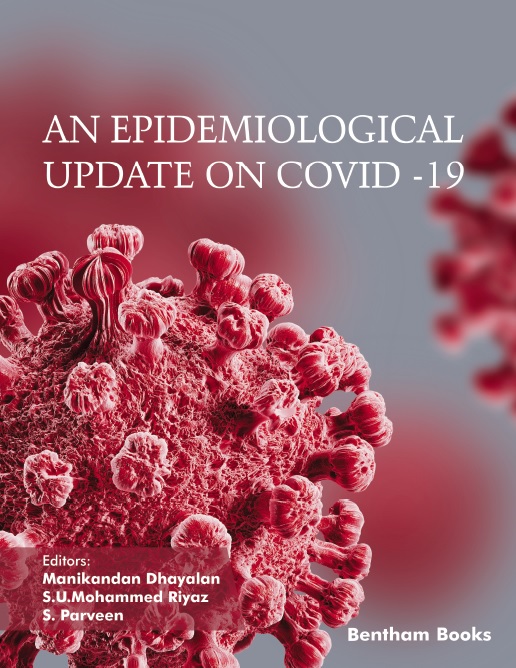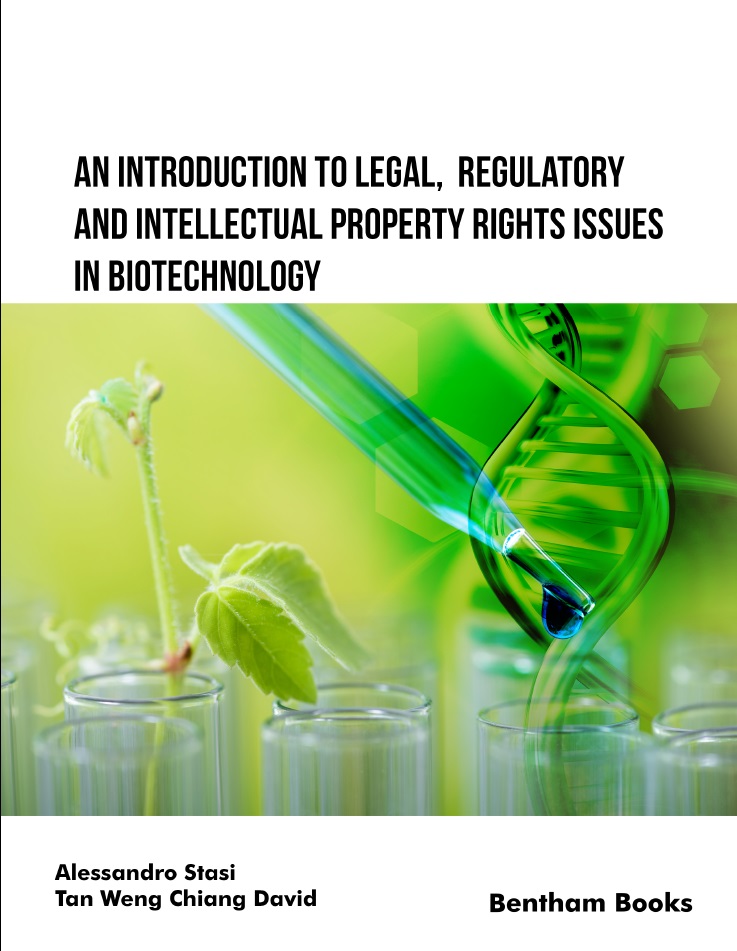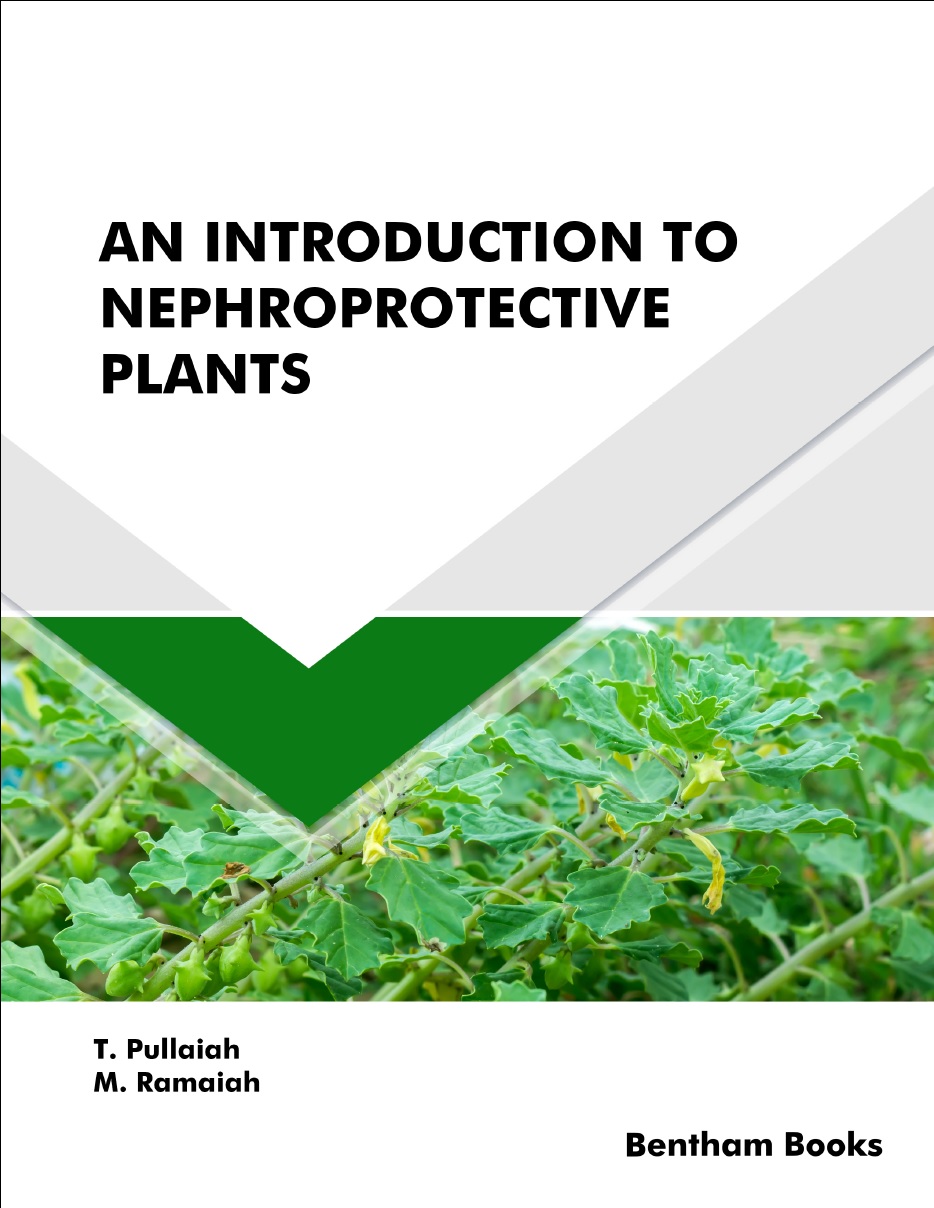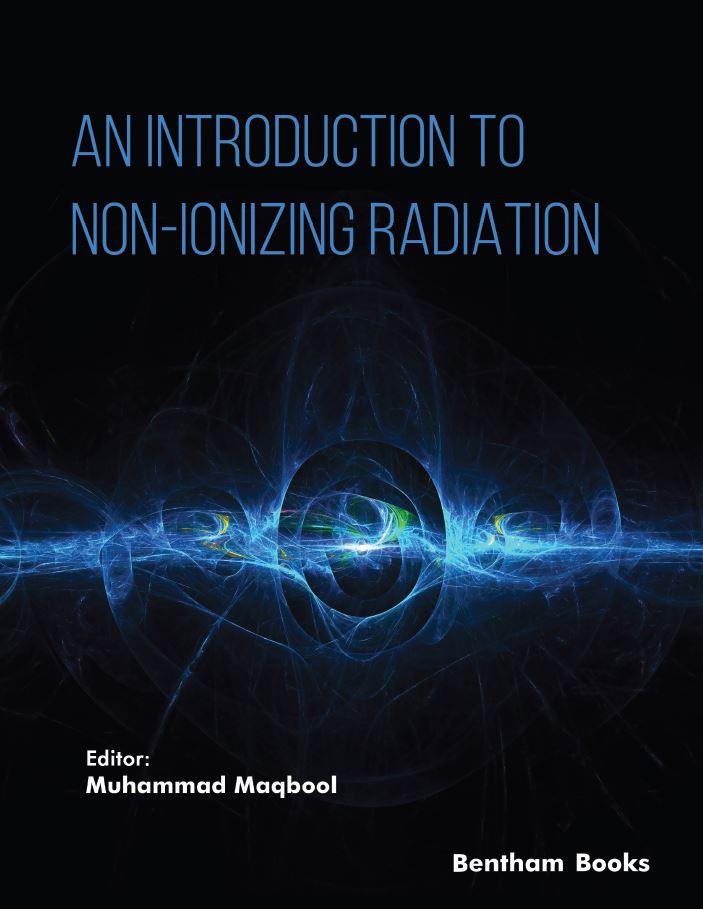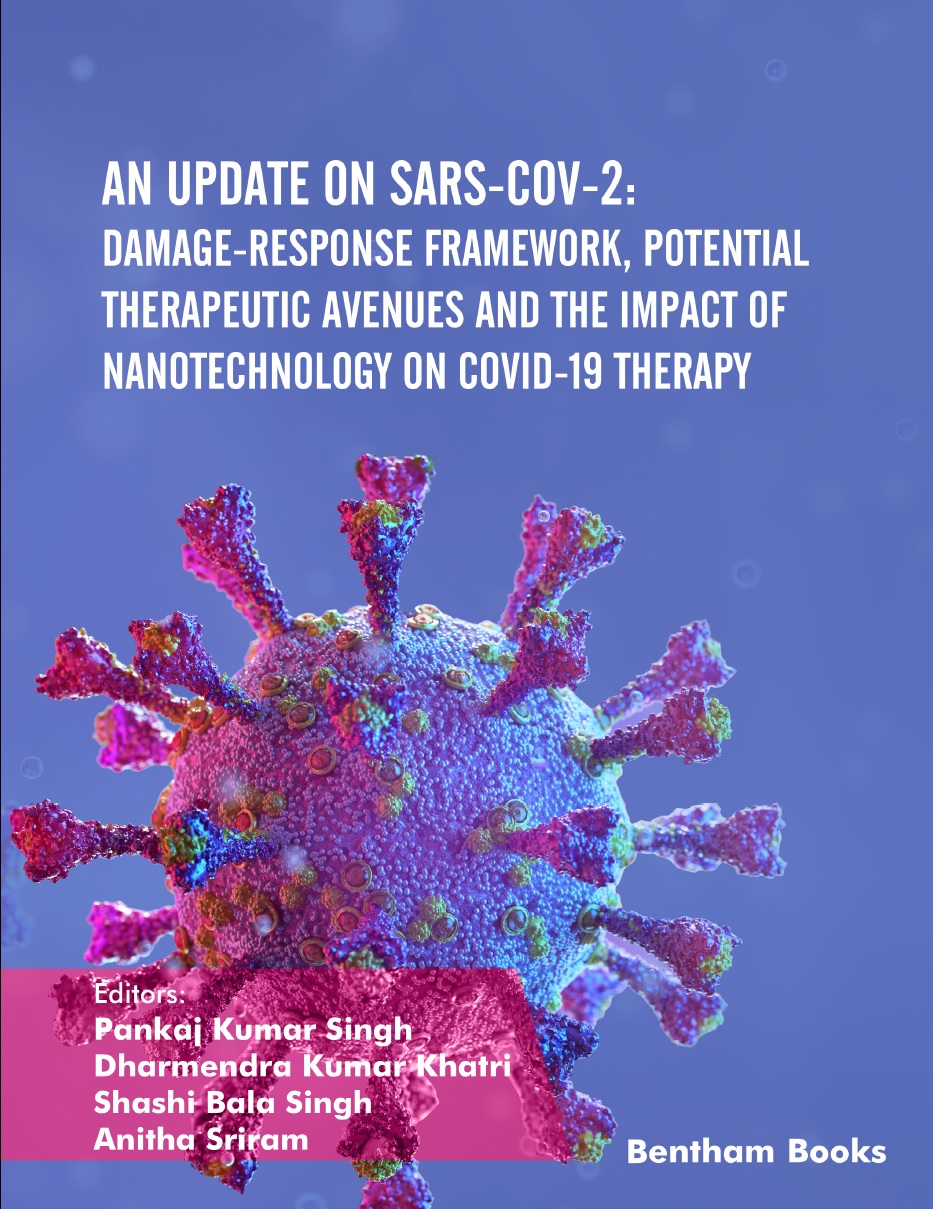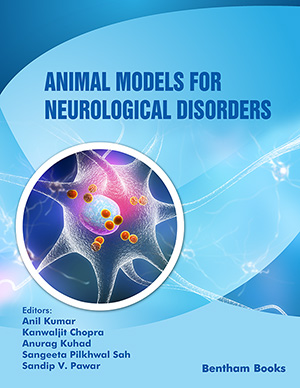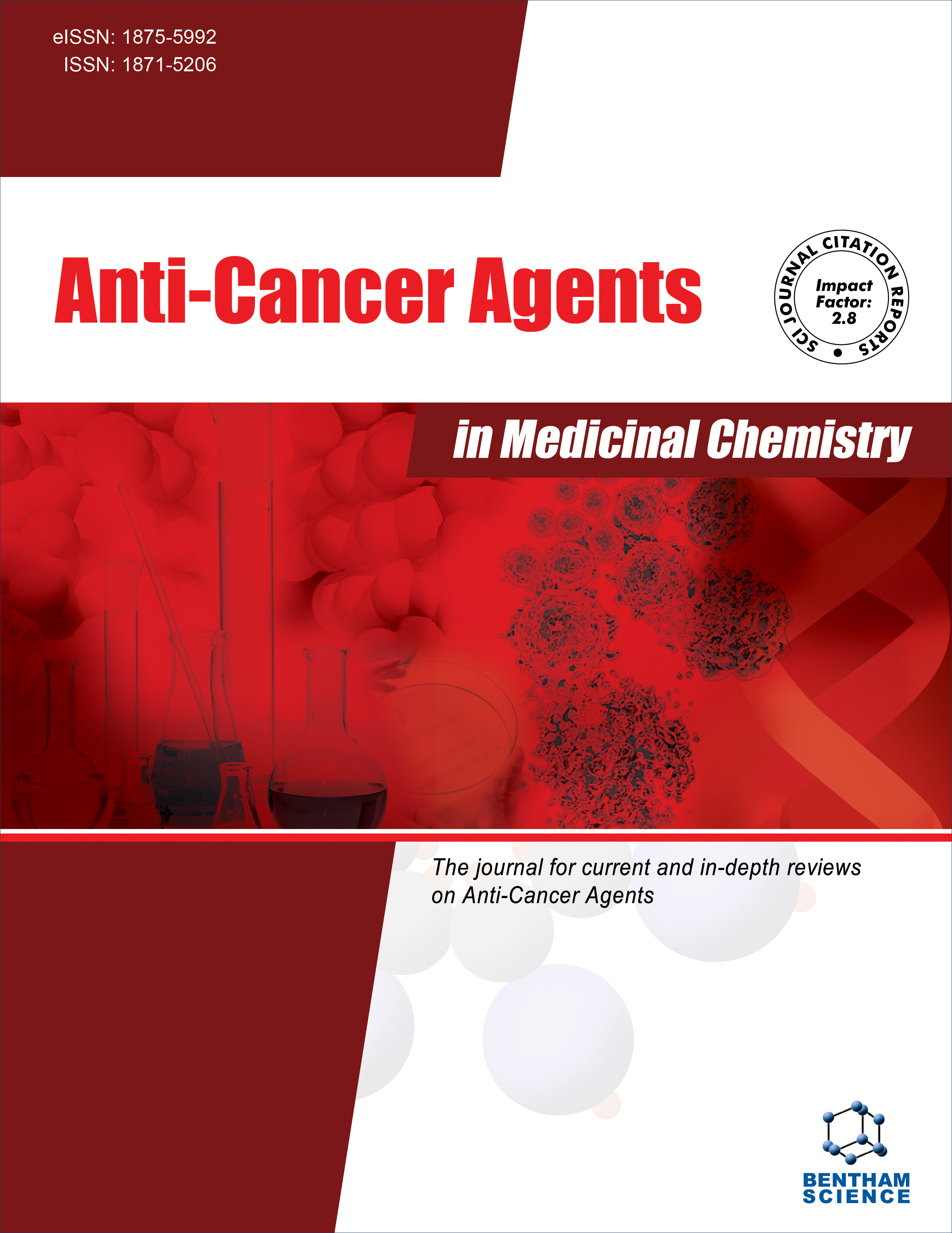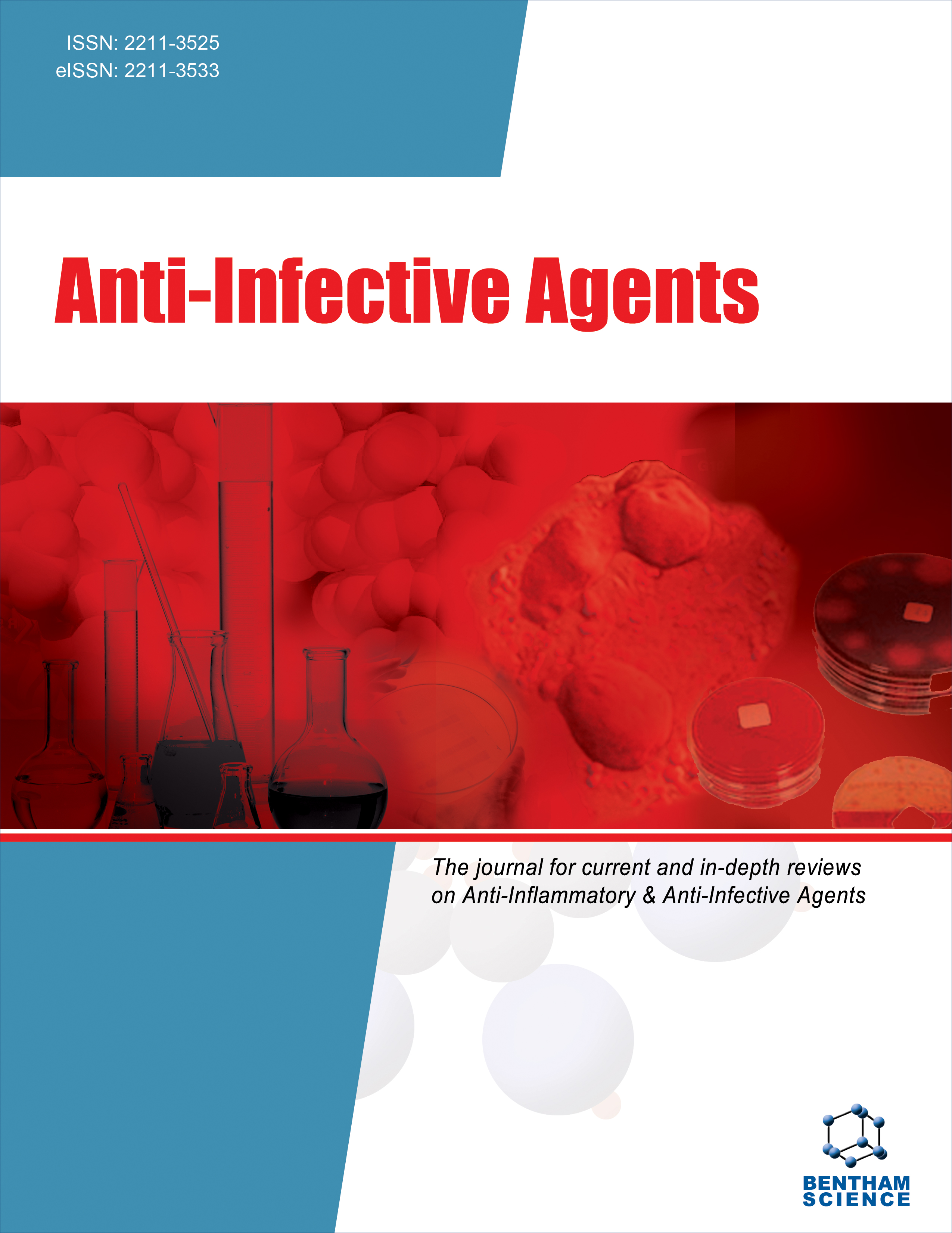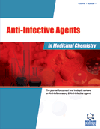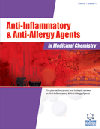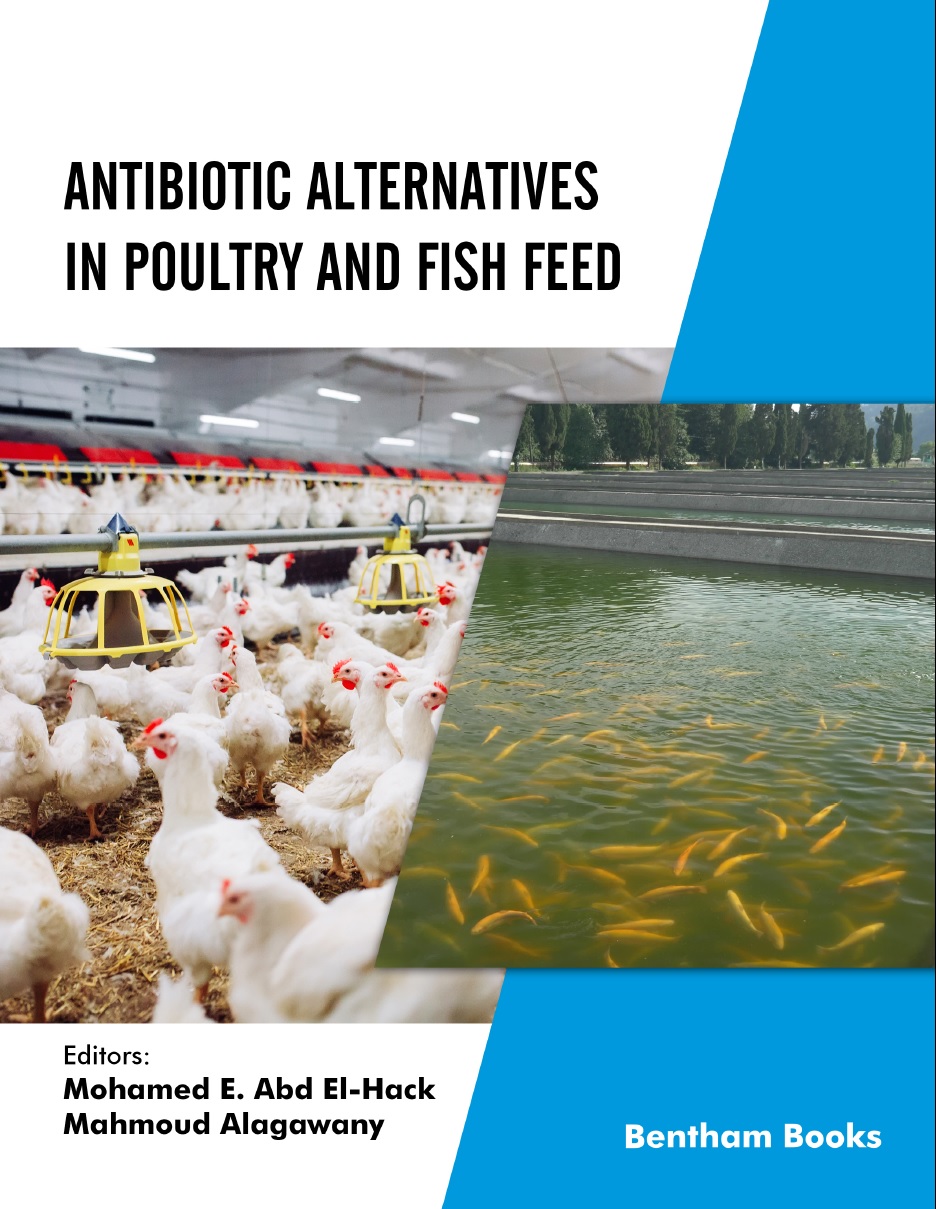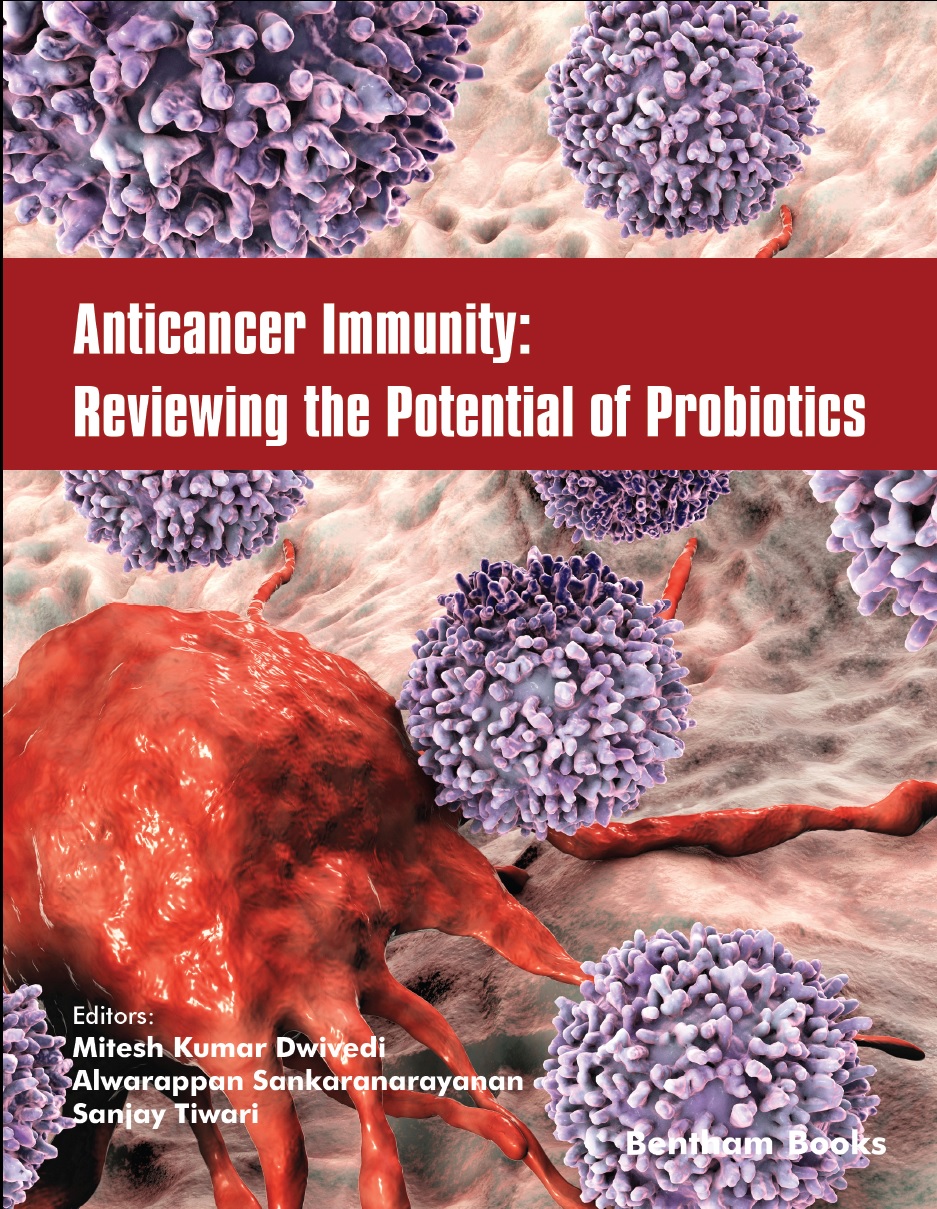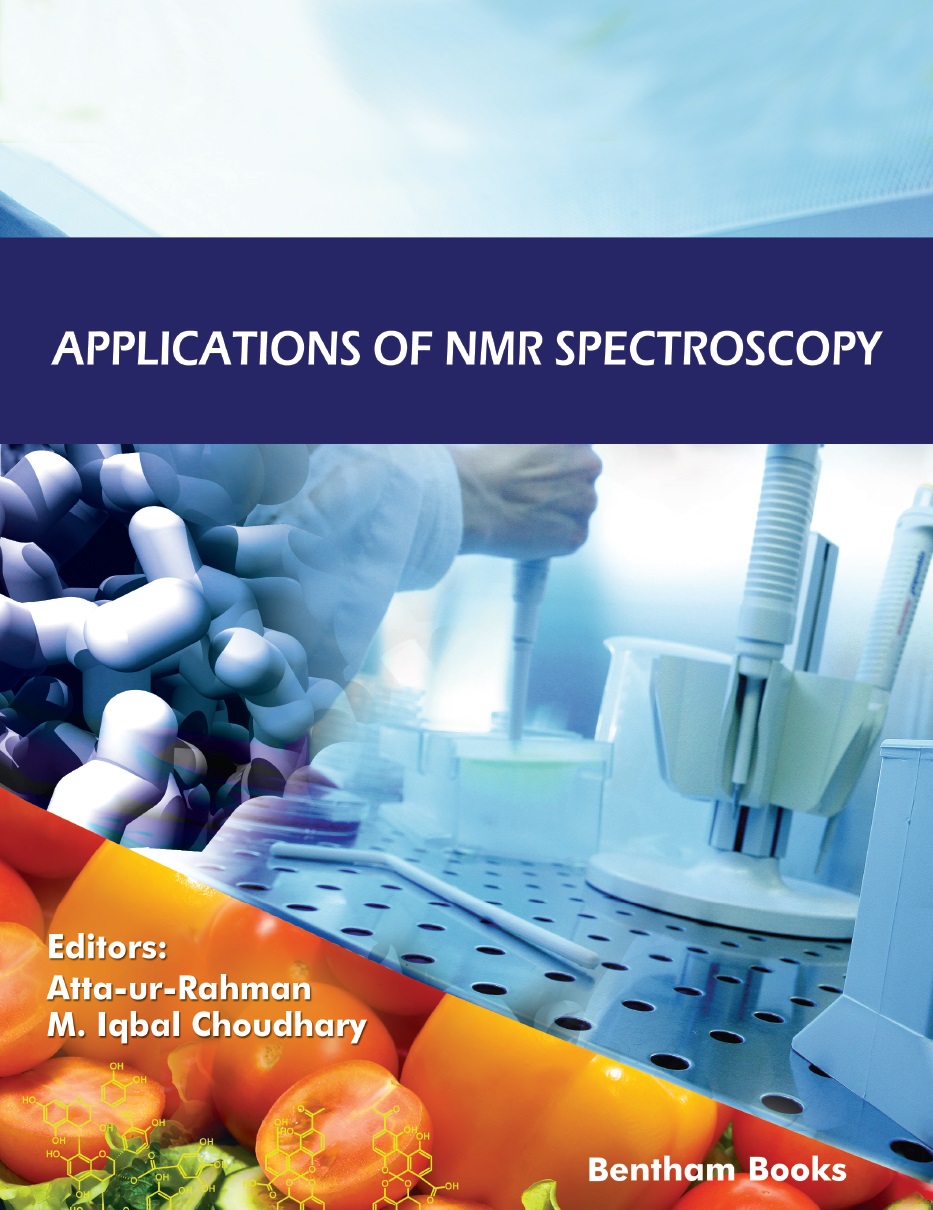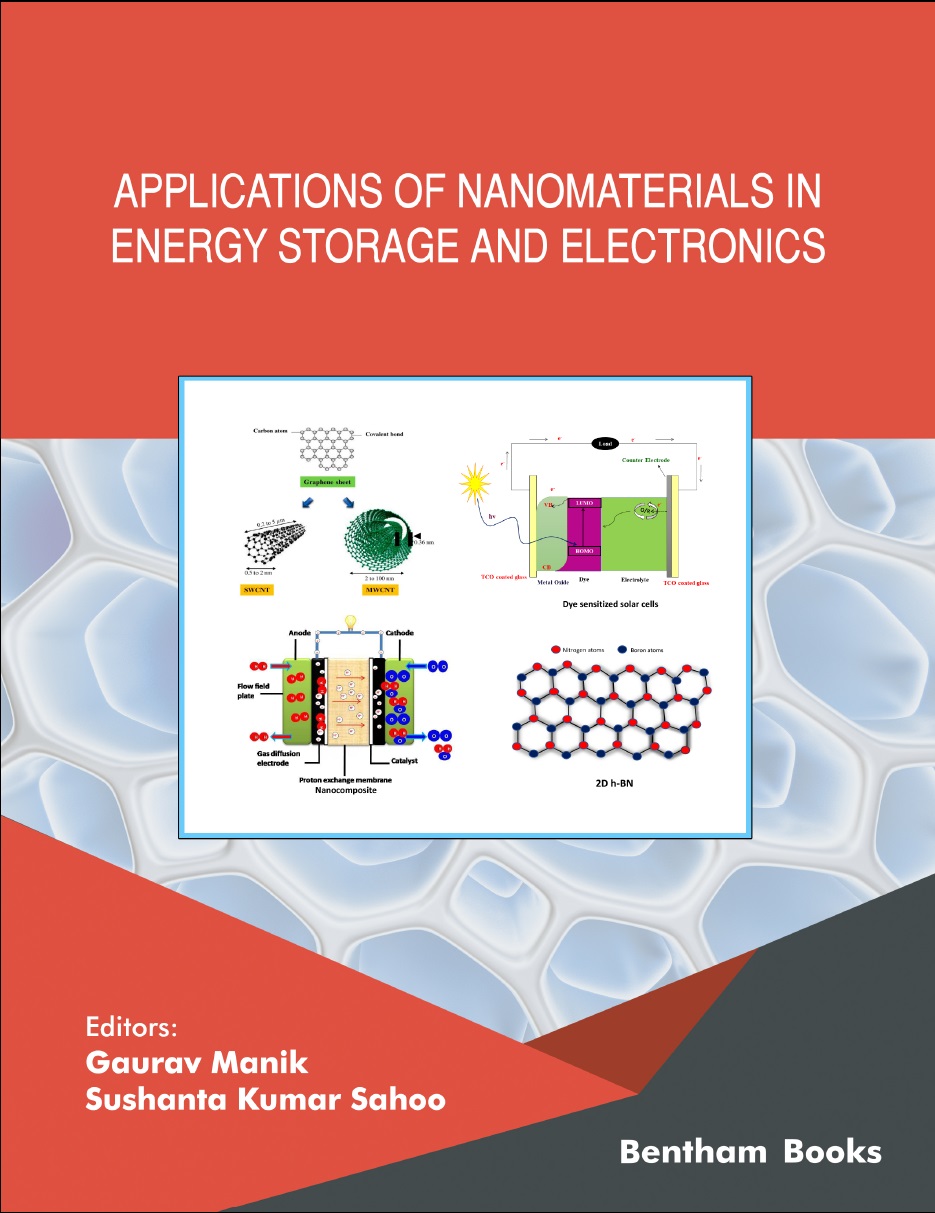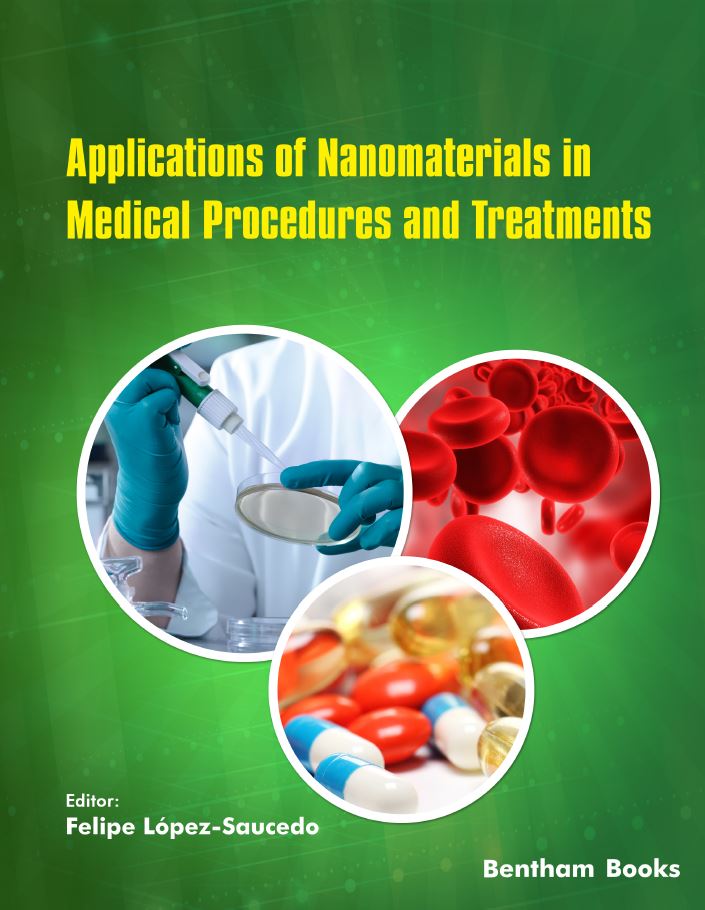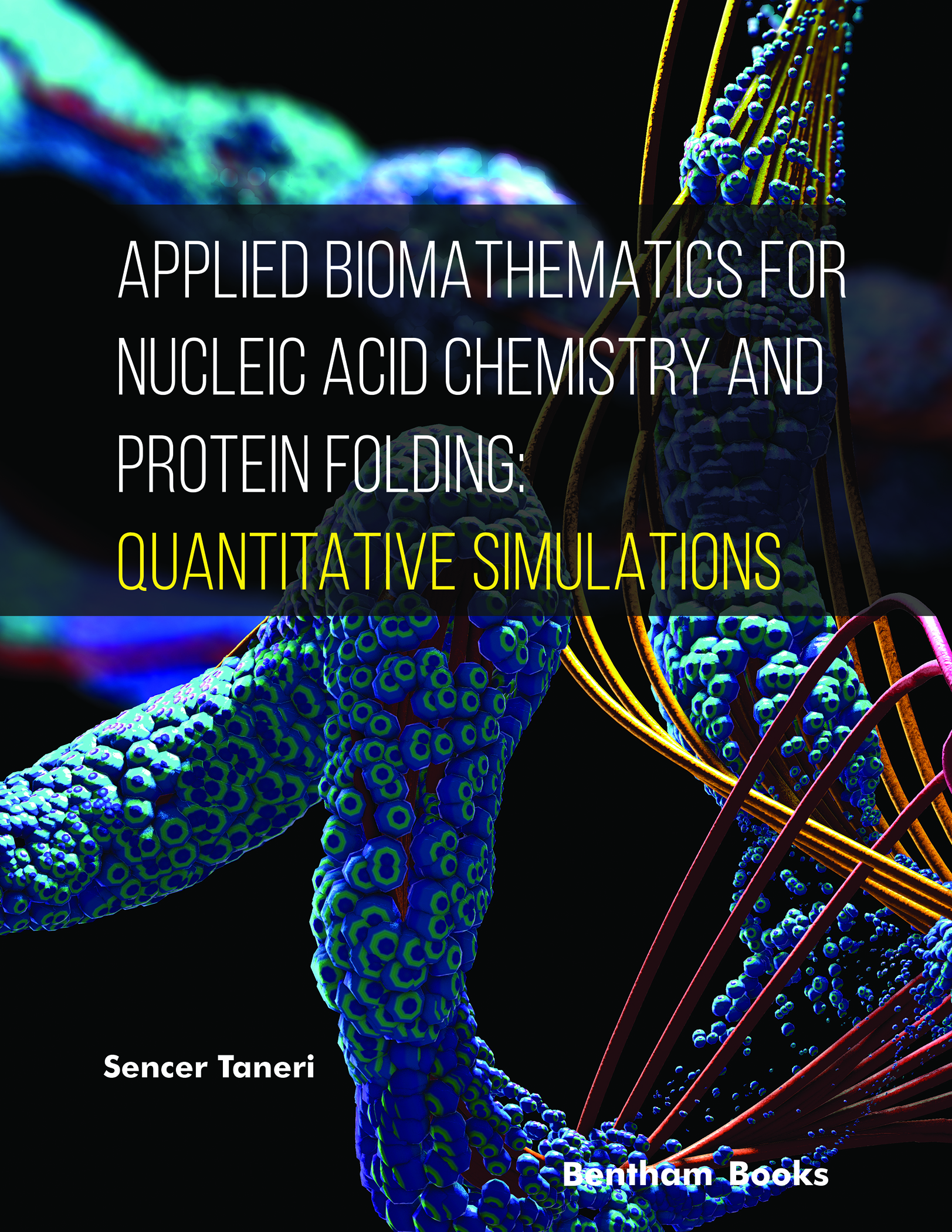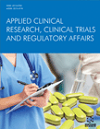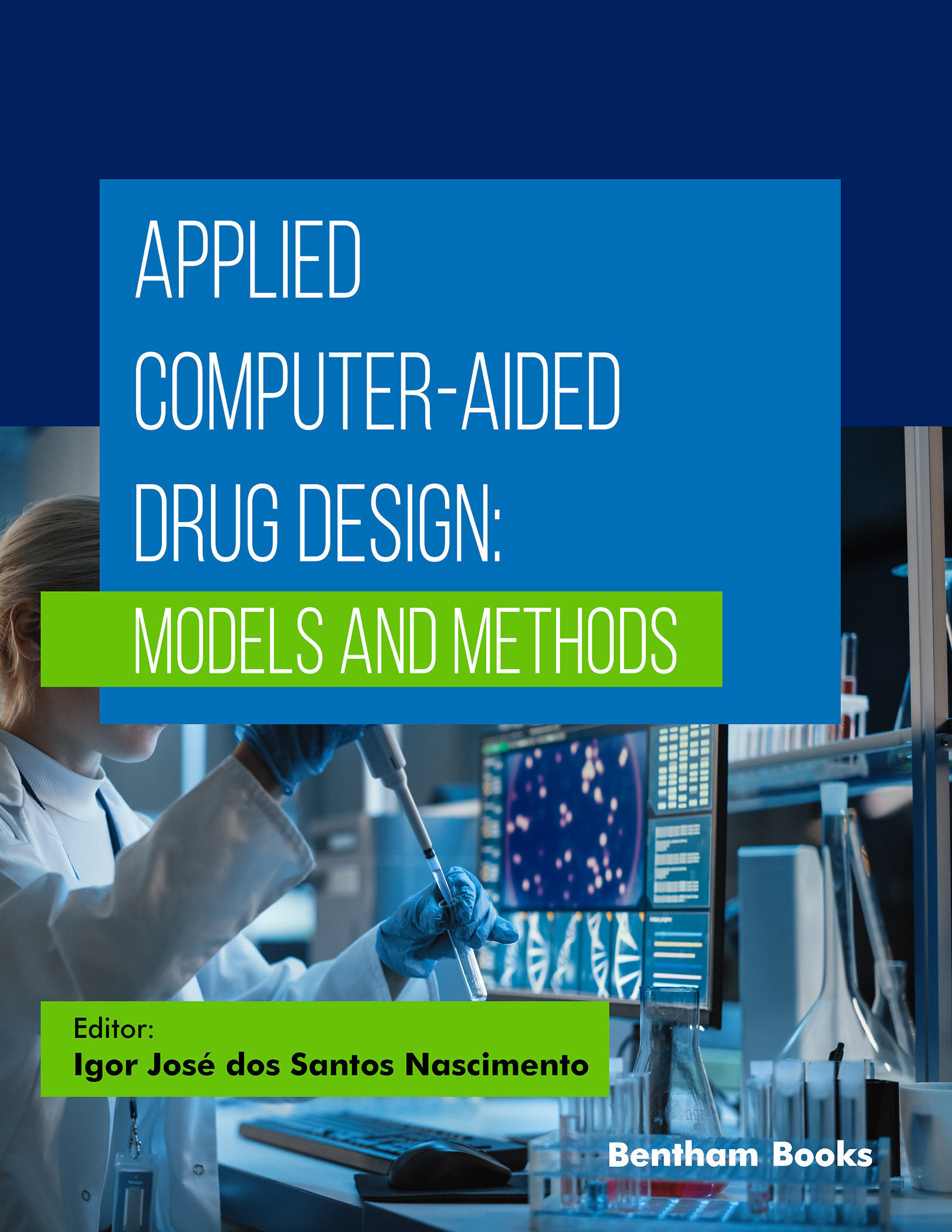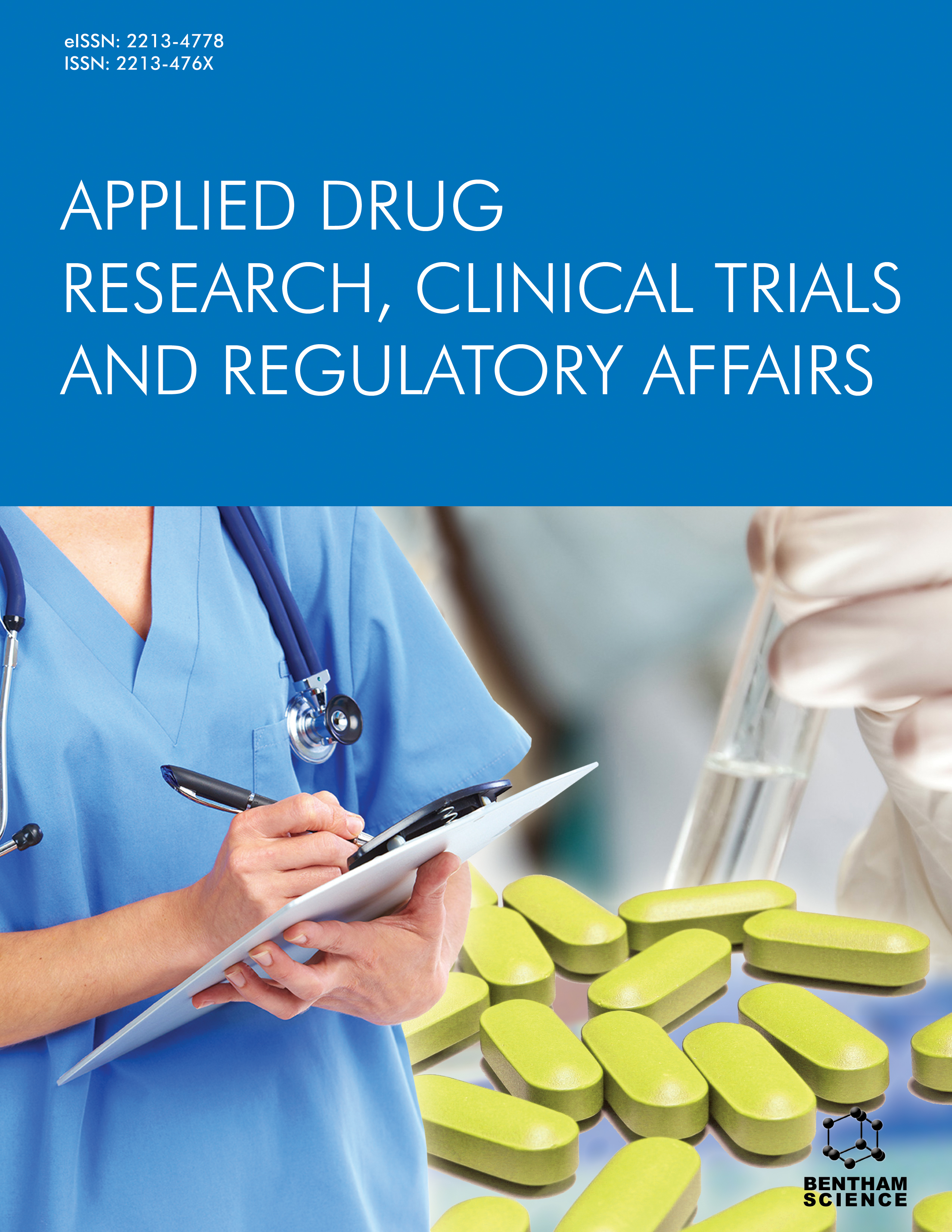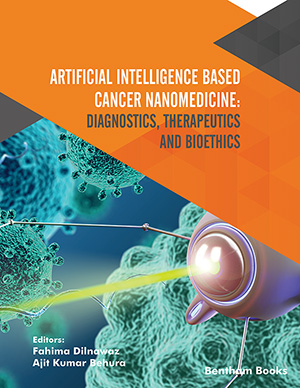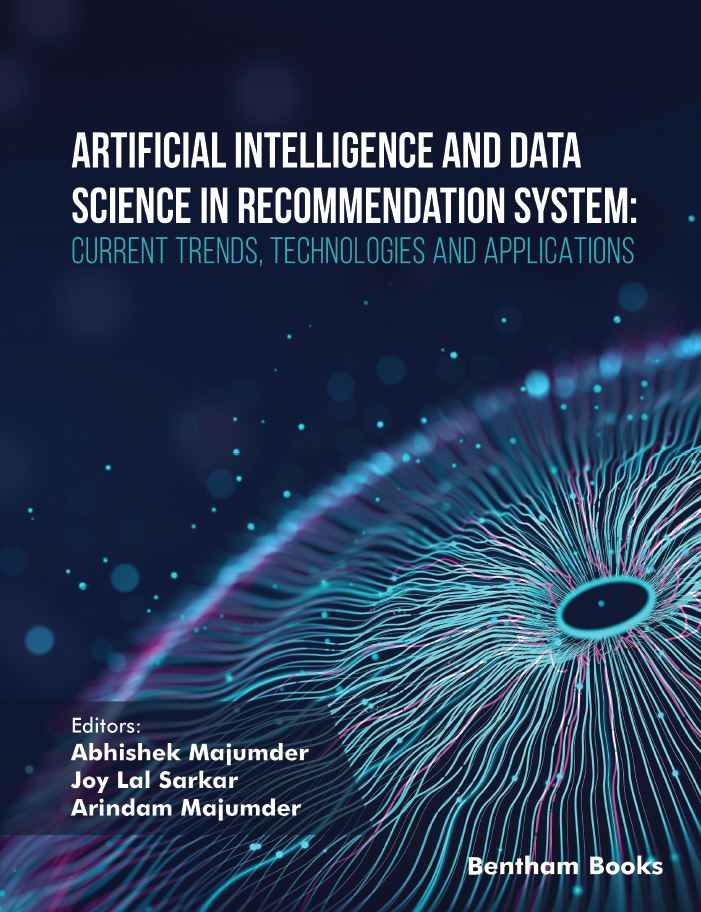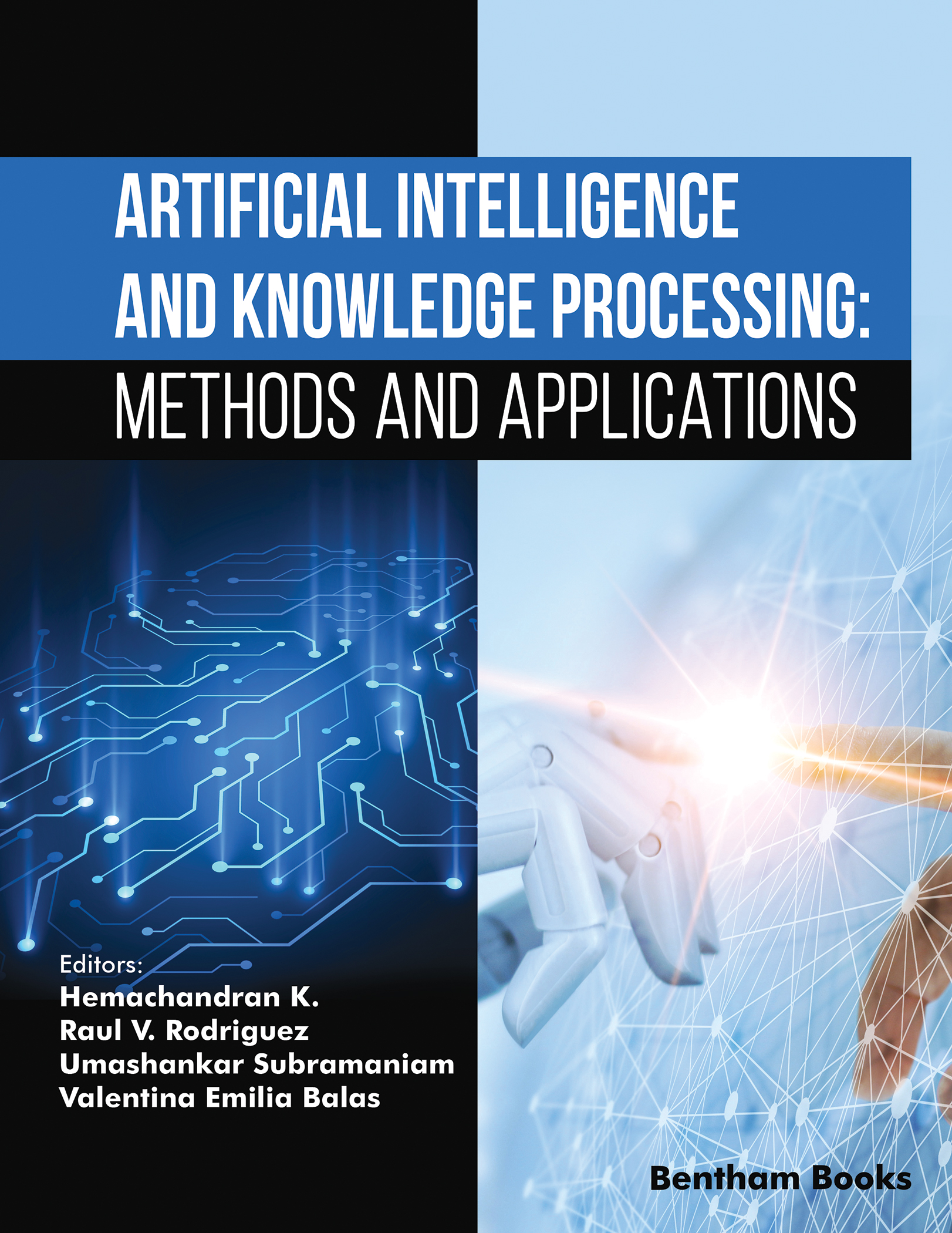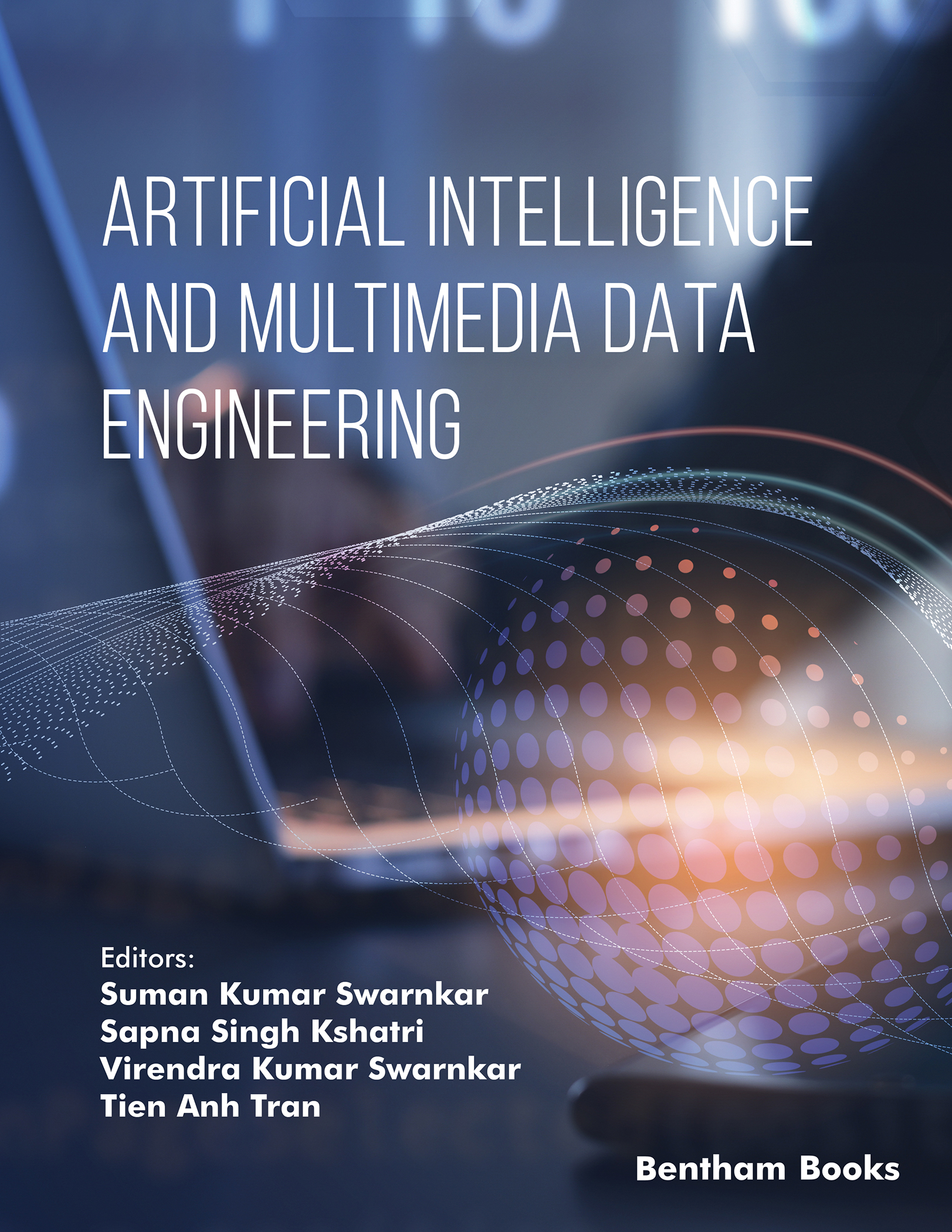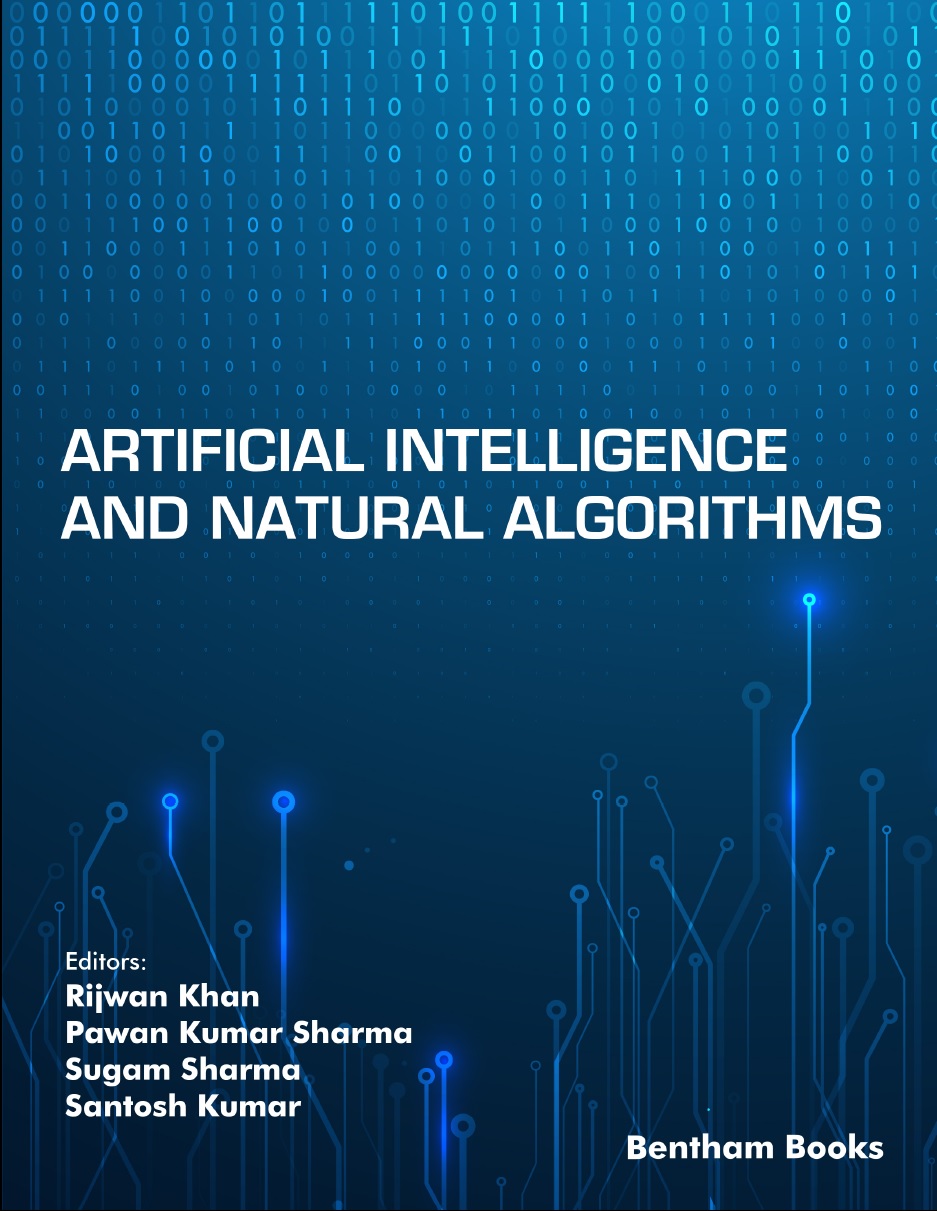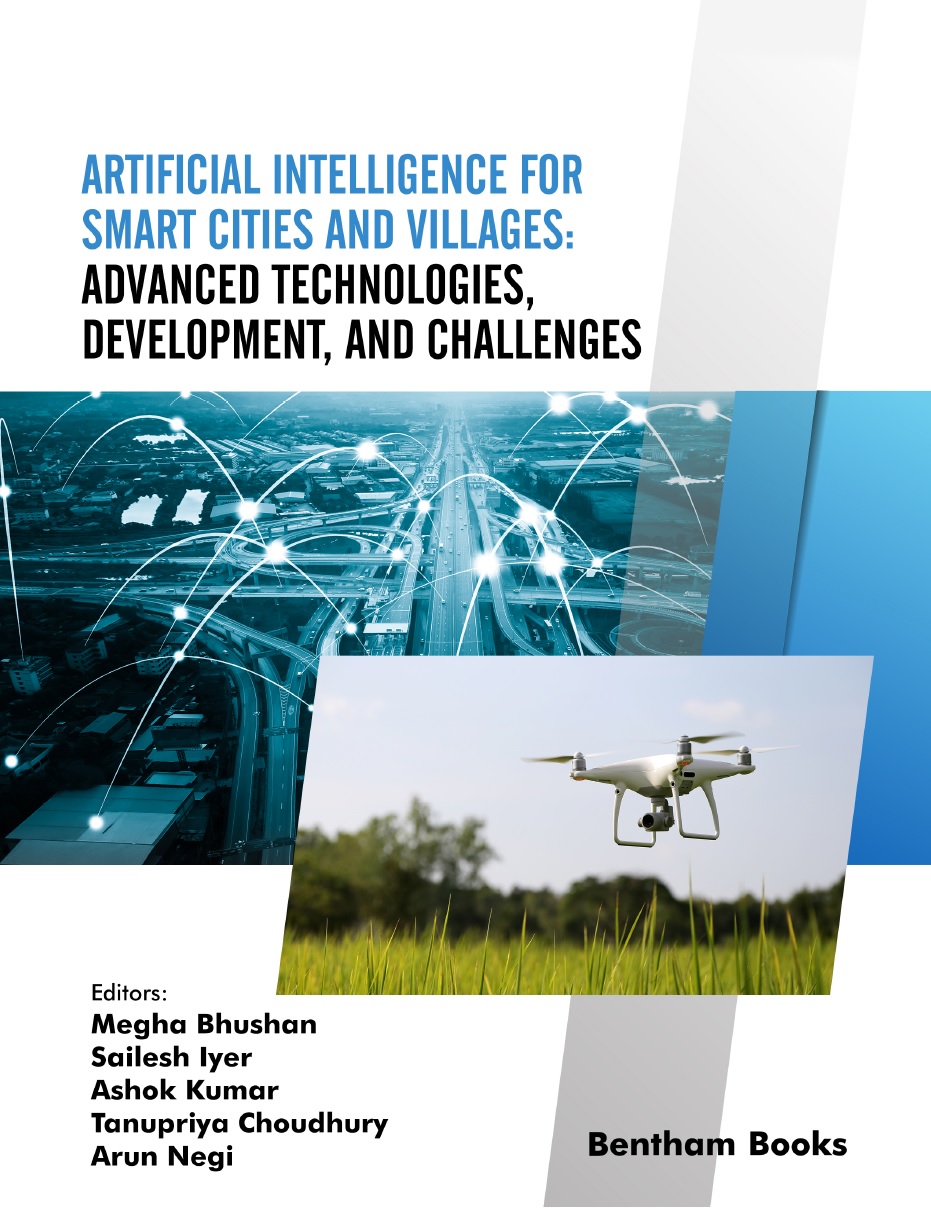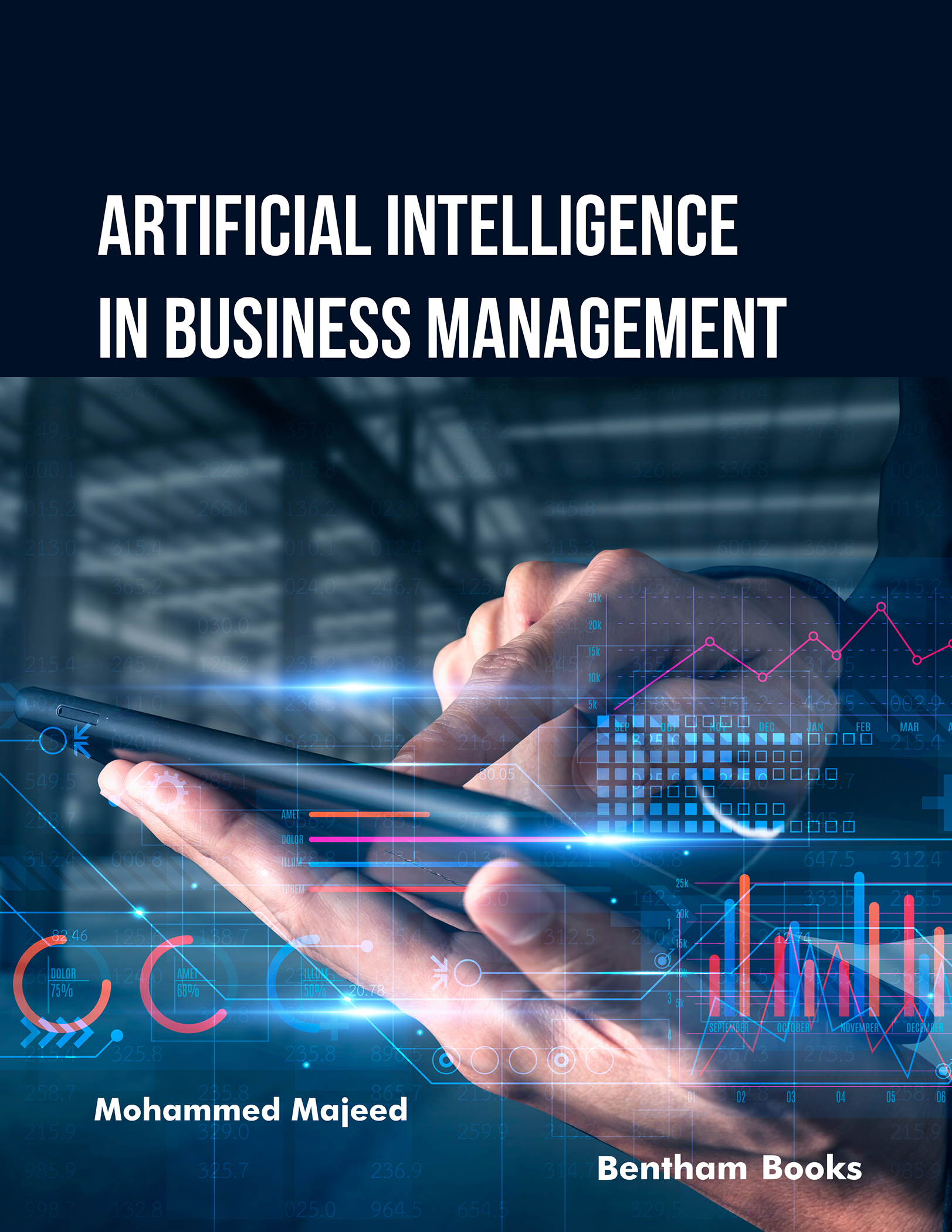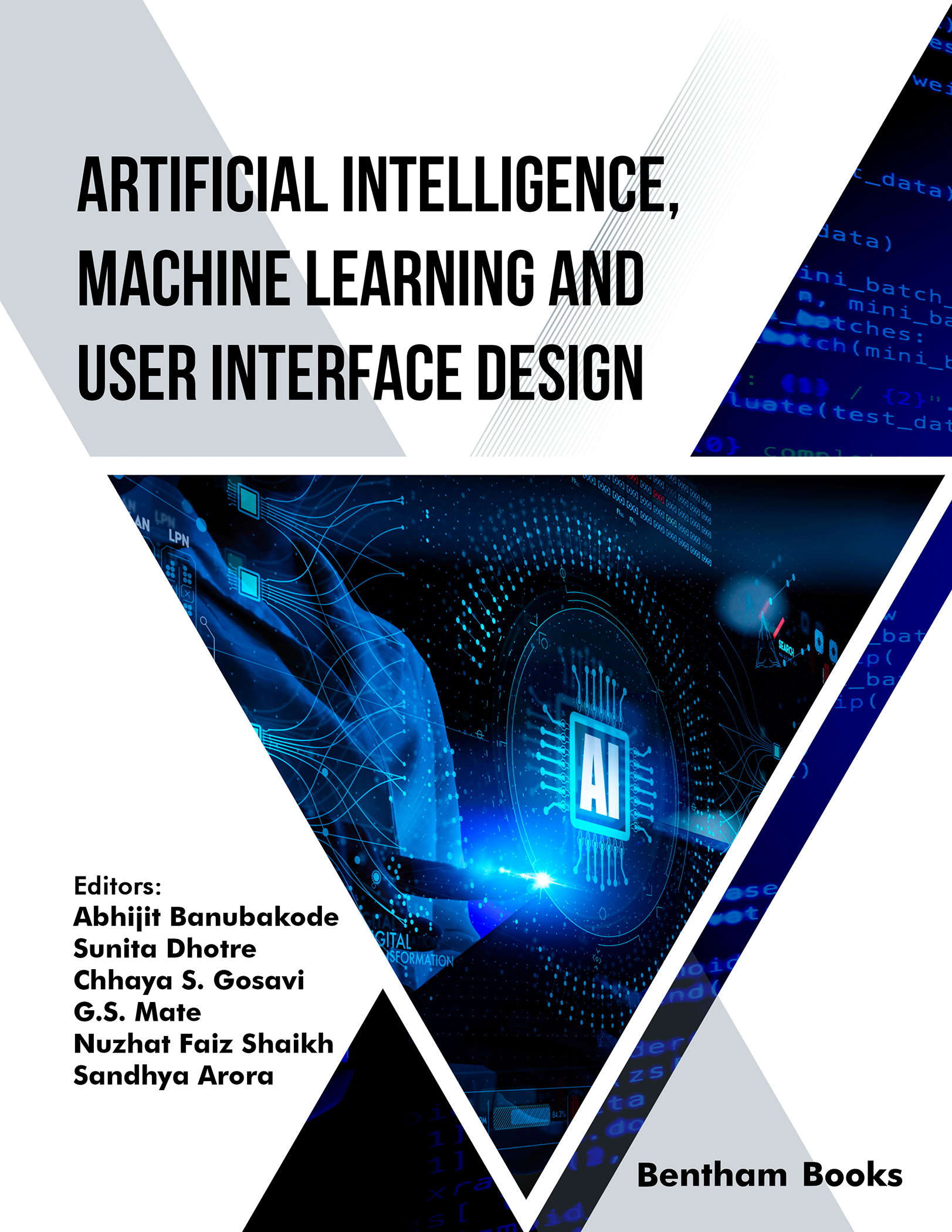- Home
- Publishers
- Bentham Science Publishers
Bentham Science Publishers
Bentham Science Publishers is a major publisher of more than 100 peer-reviewed science, technology and medical (STM) journals, along with a rapidly growing collection of eBooks. Since 1993, Bentham Science Publishers has been catering to the information needs of the pharmaceutical, engineering, biomedical and medical research community.1454
results
101 - 200 of 1454 results
-
-
An Account of Thermodynamic Entropy
More LessThe second law of thermodynamics is an example of the fundamental laws that govern our universe and is relevant to every branch of science exploring the physical world. This reference summarizes knowledge and concepts about the second law of thermodynamics and entropy. A verbatim explanation of chemical thermodynamics is presented by the author, making this text easy to understand for chemistry studen Read More
-
-
-
An Atlas on the Comparative Anatomy of the Retinae of Vertebrates
More LessThis atlas covers basic as well as novel information on the retinae of various representative vertebrates including fish, amphibians, reptiles, birds, and mammals. The book consists of over 200 illustrations with brief descriptions pointing out special features of each retina displayed. The detailed information on the complexity and variety of visual cells in different animals will give interested readers an insight on the retinae of vert Read More
-
-
-
An Ecological Perspective on Health Promotion Systems, Settings and Social Processes
More LessThis e-book adds a new dimension to currently available text in health promotion by applying examples from evaluation studies to explore basic health promotion principles. It thus goes beyond single case study descriptions. The volume intricately blends an ecological approach with social science.A multiple settings approach is extensively covered by analyzing participants’ perceptions of the family, leisure and school settin Read More
-
-
-
An Epidemiological Update on COVID -19
More LessAn Epidemiological Update on COVID-19 brings recent findings about the pandemic to the forefront. The reference is a compilation of eleven chapters contributed by expert scholars in epidemiology and medicine that cover topics of interest to anyone interested in COVID-19 monitoring and response measures. The topics also indicate some clinical areas of interest to COVID-19 researchers that have received attention d Read More
-
-
-
An Integrated Geophysical and Geotechnical Assessment of Hazards Around the Abu Serga Church
More LessThe Abu Serga Church is one of the oldest known Coptic churches in Egypt, with a history of almost 1700 years. This reference work presents a comprehensive geotechnical and geophysical survey of the vicinity of the Abu Serga Church. The book details the information of the survey using classical and modern methods of geotechnical engineering while keeping contemporary issues faced by site investigators in view. Chapt Read More
-
-
-
An Introduction to Legal, Regulatory and Intellectual Property Rights Issues in Biotechnology
More LessBiotechnology, a branch of science and a fast-growing source of developing technologies, has shown immense potential for its utility across all the dimensions of our lives. Its applications range from drugs and therapeutics, industrial, household applications, biofuels, and information technology to almost all resource-based sectors, such as manufacturing, aquaculture, agriculture, and forestry. Biotechnology offers outstanding po Read More
-
-
-
An Introduction to Nephroprotective Plants
More LessThe kidneys are a vital organ present in humans and vertebrate animals. Various toxic chemicals, present in food and water adversely affect the kidneys. Plants and plant-derived compounds have been a major source for the treatment and cure of diseases since ancient times. Even today, almost 25% of the prescription drugs for renal problems are sourced from plants. An Introduction to Nephroprotective Plants gives an o Read More
-
-
-
An Introduction to Non-Ionizing Radiation
More LessAn Introduction to Non-Ionizing Radiation provides a comprehensive understanding of non-ionizing radiation (NIR), exploring its uses and potential risks. The information is presented in a simple and concise way to facilitate easy understanding of relevant concepts and applications. Chapters provide a summary and include relevant equations that explain NIR physics. Other features of the book include colorful illustrations and Read More
-
-
-
An Introduction to Trigonometry and its Applications
More LessThis book represents a novel approach for the trigonometry and an original scientific work in this field, by using the ensemble structure composed of the real analysis and the axiomatic fundaments of geometry. Throughout this e – book one presents, in a proper manner, definitions, properties, formulae and applications more specific of the subject title and its immediate connections. The book is recommended not only as a perti Read More
-
-
-
An Update on SARS-CoV-2: Damage-response Framework, Potential Therapeutic Avenues and the Impact of Nanotechnology on COVID-19 Therapy
More LessThis update on SARS-CoV-2 focuses on basic knowledge about the virus and COVID-19 treatment. Chapters present basic information about the disease and its treatment. The virology, epidemiology, etiology, and damage response framework of SARS-CoV-2 are also discussed in detail. The book also covers recent topics of interest to pharmacology scholars such as the immunopathogenesis of SARS-CoV2, nanotechnology, r Read More
-
-
-
Analog Circuit Design for Communication SOC
More LessThis e-book provides several state-of-the-art analog circuit design techniques. It presents both empirical and theoretical materials for system-on-a-chip (SOC) circuit design. Fundamental communication concepts are used to explain a variety of topics including data conversion (ADC, DAC, Σ-Δ oversampling data converters), clock data recovery, phase-locked loops for system timing synthesis, supply voltage regulation, power a Read More
-
-
-
Analysis and Optimal Control of Phase-Field Transition System: Fractional Steps Methods
More LessAll developments in mathematics and computer science facilitate development of industrial applications. This e-book approaches the subject in a profoundly interdisciplinary manner. The spectrum of subjects covered in this e-book includes mathematics, computer science, materials science and industrial applications. Specifically, the e-book elaborates on mathematical models of phase-field transitions. Nonlinear parabolic sy Read More
-
-
-
Analytical Microextraction Techniques
More LessSample treatment has been the focus of intensive research in the last 20 years since it still remains a bottleneck in precise analytical procedures. The low concentration of the target analytes, the large amount of potential interfering agents and the incompatibility of the sample matrix with the instrumental techniques are the main reasons for these bottlenecks. In most of these methods, sample treatment is an unavoidable ste Read More
-
-
-
Anatomy for Oral and Maxillofacial Radiology
Frontiers in Anatomy: Volume 1
More LessAnatomy for Oral and Maxillofacial Radiology is a handy atlas for medical students and residents learning about radiography and diagnostic procedures in oral and maxillofacial medicine. This brief book starts from basic information about radiographic images and expands into chapters detailing intraoral diagnostic techniques, extraoral diagnostic techniques and oral/maxillofacial abnormalities. Over 80 illustrations demo Read More
-
-
-
Anatomy: A Pressing Concern in Exercise Physiology
More LessAnatomy: A Pressing Concern in Exercise Physiology is a thorough analysis of the importance of anatomy in exercise physiology courses. It presents a series of topics that cover key concept and terms in anatomy, muscle physiology, kinesiology, the use of imagery in anatomy, physical flexibility and the conventional study of cadavers. Readers of the book will receive reliable anatomical knowledge, well-researched cadaver infor Read More
-
-
-
Angelman Syndrome: Communication, Educational and Related Considerations
More LessIndividuals with Angelman Syndrome (AS) present many unique challenges to professionals, parents and others who are committed to maximizing individuals competence while ensuring them the best possible quality of life. Angelman Syndrome: Communication, Educational, and Related Considerations is a unique, exhaustive compilation of existing material related to understanding the nature of AS and how individuals c Read More
-
-
-
Angiogenesis & Therapeutic Targets In Cancer
More LessAngiogenesis plays rate limiting roles in tumor growth and invasion. Angiogenesis inhibition has been proposed as a general strategy to fight against cancers. This book covers different therapeutic targets for angiogenesis interventions with emphasis on clinical development of antiangiogenic drugs that target antiangiogenic cascade in different forms of cancers like breast cancer, multiple myeloma, renal carcin Read More
-
-
-
Animal Models for Neurological Disorders
More LessAnimal disease models are a vital tool to study diseases and associated conditions. Studies on animal models can, in some cases, be used as a basis for modeling and understanding human diseases. Biomedical scientists face a challenge to choose the correct animal model to study disease pathology, and neurological diseases are no exception to this rule. Animal Models for Neurological Disorders covers different animal mo Read More
-
-
-
Anthocyanins: Pharmacology and Nutraceutical Importance
More LessAnthocyanins are a diverse group of phytochemicals used for the treatment and management of acute and chronic ailments. This book is a comprehensive guide to anthocyanins and their importance as pharmaceutical and nutraceutical agents. The book provides detailed information about anthocyanin sources and their application in the treatment of diseases including cancer, gastric disorders, infertility, metabolic dis Read More
-
-
-
Anthrax: History, Biology, Global Distribution, Clinical Aspects, Immunology, and Molecular Biology
More LessFollowing the post 9/11 distribution of anthrax spores through the U.S. mail, and the resulting deaths of five individuals - primarily due to initial misdiagnosis - there has been a renewed interest in anthrax among clinicians and intelligence agencies, particularly as a biological warfare agent. This monograph brings forth essential knowledge about anthrax. Included in this volume, are, the early history, non-natural outbreaks of Read More
-
-
-
Anti-Angiogenesis Drug Discovery and Development: Volume 1
More LessThe inhibition of angiogenesis is an effective mechanism of slowing down tumor growth and malignancies. The process of induction or pro-angiogenesis is highly desirable for the treatment of cardiovascular diseases, wound healing disorders, etc. Efforts to understand the molecular basis, both for inhibition and induction, have yielded fascinating results.Anti-angiogenesis Drug Discovery and Development provides an Read More
-
-
-
Anti-Angiogenesis Drug Discovery and Development: Volume 2
More LessThe inhibition of angiogenesis is an effective mechanism of slowing down tumor growth and malignancies. The process of induction or pro-angiogenesis is highly desirable for the treatment of cardiovascular diseases, wound healing disorders, etc. Efforts to understand the molecular basis, both for inhibition and induction, have yielded fascinating results.Anti-angiogenesis Drug Discovery and Development provides is a Read More
-
-
-
Anti-Angiogenesis Drug Discovery and Development: Volume 3
More LessThe inhibition of angiogenesis is an effective mechanism of slowing down tumor growth and malignancies. The process of induction or pro-angiogenesis is highly desirable for the treatment of cardiovascular diseases, wound healing disorders, etc. Efforts to understand the molecular basis, both for inhibition and induction, have yielded fascinating results.Anti-angiogenesis Drug Discovery and Development provides an Read More
-
-
-
Anti-Angiogenesis Drug Discovery and Development: Volume 4
More LessThe inhibition of angiogenesis is an effective mechanism of slowing down tumor growth and malignancies. The process of induction or pro-angiogenesis is highly desirable for the treatment of cardiovascular diseases, wound healing disorders, etc. Efforts to understand the molecular basis, both for inhibition and induction, have yielded fascinating results.Anti-angiogenesis Drug Discovery and Development provides an Read More
-
-
-
Anti-Angiogenesis Drug Discovery and Development: Volume 5
More LessThe inhibition of angiogenesis is an effective mechanism of slowing down tumor growth and malignancies. The process of induction or pro-angiogenesis is highly desirable for the treatment of cardiovascular diseases, and wound healing disorders. Efforts to understand the molecular basis, both for inhibition and induction, have yielded fascinating results.Anti-angiogenesis Drug Discovery and Development provides an Read More
-
-
-
Anti-Cancer Agents in Medicinal Chemistry (Formerly Current Medicinal Chemistry - Anti-Cancer Agents)
More LessAnti-Cancer Agents in Medicinal Chemistry aims to cover all the latest and outstanding developments in medicinal chemistry and rational drug design for the discovery of anti-cancer agents. Each issue contains a series of timely in-depth/mini-reviews and guest-edited issues written by leaders in the field covering a range of current topics in oncology and medicinal chemistry. The journal considers high-quality reviews an Read More
-
-
-
Anti-Infective Agents
More LessAnti-Infective Agents publishes original research articles, full-length/mini reviews, drug clinical trial studies and guest edited issues on all the latest and outstanding developments on the medicinal chemistry, biology, pharmacology and use of anti-infective and anti-parasitic agents. The scope of the journal covers all pre-clinical and clinical research on antimicrobials, antibacterials, antiviral, antifungal, and antiparasitic agents.Anti Read More
-
-
-
Anti-Infective Agents in Medicinal Chemistry (Formerly Current Medicinal Chemistry - Anti-Infective Agents)
More LessAnti-Infective Agents in Medicinal Chemistry aims to cover all the latest and outstanding developments in medicinal chemistry and rational drug design for the discovery of new anti-infective agents.Each issue contains a series of timely in-depth reviews written by leaders in the field covering a range of current topics in anti-infective medicinal chemistry.Anti-Infective Agents in Medicinal Chemistry is an essential journal for ever Read More
-
-
-
Anti-Inflammatory & Anti-Allergy Agents in Medicinal Chemistry (Formerly Current Medicinal Chemistry - Anti-Inflammatory and Anti-Allergy Agents)
More LessAnti-Inflammatory & Anti-Allergy Agents in Medicinal Chemistry aims to cover all the latest and outstanding developments in medicinal chemistry and rational drug design for the discovery of new Anti-Inflammatory & Anti-Allergy Agents.Each issue contains a series of timely in-depth reviews written by leaders in the field covering a range of current topics in Anti-Inflammatory & Anti-Allergy Medicinal Chemistry.Anti-Inflammat Read More
-
-
-
Anti-Obesity Drug Discovery and Development: Volume 5
More LessObesity is a complex health problem, caused by a number of factors such as excessive food intake, lack of physical activity, genetic predisposition, endocrine disorders, medications and psychiatric illnesses. The incidence of obesity among populations in both the developing and the developed world has reached epidemic proportions. In response to this, efforts to control and treat obesity have also been vigorously pursued, ran Read More
-
-
-
Anti-infective Research and Development: Updates on Infection Mechanisms and Treatments
Frontiers in Anti-infective Agents: Volume 2
More LessThis volume of Frontiers in Anti-Infective Agents provides updates on the most recent studies about anti-infective agents, their mechanism of action, the relevant molecular targets and their implication in the development of novel antibiotics that have properties similar to their corresponding compounds of natural origin. The initial chapter covers the mode of action of natural antimycobacterial compounds such Read More
-
-
-
Antibiotic Alternatives in Poultry and Fish Feed
More LessThis handbook focuses on the use of antibiotic alternatives in poultry and fish feed. Chapters in the book cover a range of natural ingredients in feed and the impacts of these natural feed additives on growth, production, reproduction and health status of poultry and fish. All chapters give a holistic approach to how organic feed additives (herbal plants and their extracts, probiotics, peptides, etc.) can positively impact animal Read More
-
-
-
Antibodies Applications and New Developments
More LessAntibodies Applications and New Developments is an overview of the current developments of techniques and methods relating to immunodiagnostics and immunoanalysis. This eBook also deals with specialties in the fields of drug, pesticide, antigen and food contaminant detection. The volume is useful for professional immunologists and biotechnologists interested in antibody research and development.
-
-
-
Anticancer Drugs Sourced from Marine Life
Medicinal Chemistry and Marine Life: Volume 1
More LessThis inter-disciplinary volume provides information on anticancer medicines derived from marine organisms. Eight edited reviews extensively list the variety of organisms including marine plants, sponges, cnidarians and fish. Emphasis is placed on the source of the compounds, their structure and mechanism of action. Anticancer peptides from sponges are covered in a dedicated chapter. The specific biology and ecology of m Read More
-
-
-
Anticancer Immunity: Reviewing the Potential of Probiotics
Frontiers in Cancer Immunology: Volume 4
More LessProbiotics have been suggested to be involved in both prevention and treatment of various human cancers. Anticancer Immunity: Reviewing the Potential of Probiotics explains biochemical mechanisms of anticancer immunity exerted by probiotics in various human cancers. It presents edited chapters focused on the evidence of probiotic use against human cancers through several animal and human studies. This volume consi Read More
-
-
-
Antiprotozoal Drug Discovery: A Challenge That Remains
More LessProtozoan infections that are endemic in countries with limited economic resources pose a significant public health challenge to affected communities and some of these diseases are categorized as neglected tropical diseases by the World Health Organization. At the moment, there is an urgent need to identify and develop new antiprotozoal drugs. Antiprotozoal Drug Discovery: A Challenge That Remains brings togethe Read More
-
-
-
Application Of Alternative Food-Preservation Technologies To Enhance Food Safety And Stability
More LessThe book covers the applications of some alternative approaches for prolonging food shelf life. The book describes the role of food safety objectives, natural compounds (such as oils and microbial enzymes), pressure and atmospheric techniques and alternative approaches (microwave, irradiation and mathematical microbial modeling) in food preservation.Implications of preservative approaches on food texture and sen Read More
-
-
-
Application of Adsorbents for Water Pollution Control
More LessAmong various water and wastewater treatment technologies, the adsorption process is considered better because of lower cost, simple design and easy operation. Activated carbon (a universal adsorbent) is generally used for the removal of diverse types of pollutants from water and wastewater. Research is now being directed towards the modification of carbon surfaces to enhance its adsorption potential towards sp Read More
-
-
-
Application of Chaos and Fractals to Computer Vision
More LessThis book provides a thorough investigation of the application of chaos theory and fractal analysis to computer vision. The field of chaos theory has been studied in dynamical physical systems, and has been very successful in providing computational models for very complex problems ranging from weather systems to neural pathway signal propagation. Computer vision researchers have derived motivation for their algorithms Read More
-
-
-
Applications of Advanced Ceramics in Science, Technology, and Medicine
Frontiers in Ceramic Science: Volume 3
More LessApplications of Advanced Ceramics in Science, Technology, and Medicine explores a broad range of advanced ceramic materials and their innovative applications in distinct fields. Chapters cover applications such as actuators, energy storage, environmental health and monitoring, 3D printing, electronics, biomedical engineering and EMI shielding. Chapters provide readers with an overview of the structural and fundam Read More
-
-
-
Applications of Ionic Liquids in the Oil Industry: Towards A Sustainable Industry
More LessThis book is a guide to the application of ionic liquids (ILs) in the oil industry. It includes ten chapters that review basic and advanced topics. Starting with a general introduction to IL structure and properties, the book comprehensively explains the use of ILs in key petroleum extraction processes such as pollutant removal, demulsification, crude oil transport and oil recovery. Additional applications that are important for the sustain Read More
-
-
-
Applications of NMR Spectroscopy: Volume 1
More LessApplications of NMR Spectroscopy is an eBook series devoted to publishing the latest advances in the application of nuclear magnetic resonance (NMR) spectroscopy in practical situations. In the first volume of this eBook series, readers will find detailed NMR analysis on edible oils and lipid content in foods, the role of NMR spectroscopy in the human metabolomics and the diagnosis of autism related disorders, protein-protei Read More
-
-
-
Applications of NMR Spectroscopy: Volume 2
More LessApplications of NMR Spectroscopy is an eBook series devoted to publishing the latest advances in the application of nuclear magnetic resonance (NMR) spectroscopy in practical situations. The second volume of this eBook series features five chapters covering NMR spectroscopic analysis of plant polyphenols, the role of NMR spectroscopy in neuroradiology, NMR –based sensors, studies on protein and nucleic acid structure a Read More
-
-
-
Applications of NMR Spectroscopy: Volume 3
More LessApplications of NMR Spectroscopy is a book series devoted to publishing the latest advances in the applications of nuclear magnetic resonance (NMR) spectroscopy in various fields of organic chemistry, biochemistry, health and agriculture.The third volume of this book series features six reviews covering structure-property relationship of polyphenols, NMR spectroscopy in breast cancer diagnosis, NMR methods in drug dis Read More
-
-
-
Applications of NMR Spectroscopy: Volume 4
Applications in Food Sciences
More LessApplications of NMR Spectroscopy is a book series devoted to publishing the latest advances in the applications of nuclear magnetic resonance (NMR) spectroscopy in various fields of organic chemistry, biochemistry, health and agriculture.The fourth volume of the series features several reviews focusing on NMR spectroscopic techniques in food sciences. Readers will find references on methods used to test food quality, f Read More
-
-
-
Applications of NMR Spectroscopy: Volume 5
More LessApplications of NMR Spectroscopy is a book series devoted to publishing the latest advances in the applications of nuclear magnetic resonance (NMR) spectroscopy in various fields of organic chemistry, biochemistry, health and agriculture. The fifth volume of the series features several reviews focusing on NMR spectroscopic techniques for identifying natural and synthetic compounds (polymer and peptide characterizati Read More
-
-
-
Applications of NMR Spectroscopy: Volume 6
More LessApplications of NMR Spectroscopy is a book series devoted to publishing the latest advances in the applications of nuclear magnetic resonance (NMR) spectroscopy in various fields of organic chemistry, biochemistry, health and agriculture.The sixth volume of the series features reviews focusing on NMR spectroscopic techniques for studying tautomerism, applications in medical diagnosis, in food chemistry and identifying Read More
-
-
-
Applications of NMR Spectroscopy: Volume 7
More LessApplications of NMR Spectroscopy is a book series devoted to publishing the latest advances in the applications of nuclear magnetic resonance (NMR) spectroscopy in various fields of organic chemistry, biochemistry, health and agriculture. The seventh volume of the series features six reviews focusing on NMR spectroscopic techniques for studying structures of protein complexes, metabolic profiling of gut bacteria, lipid Read More
-
-
-
Applications of NMR Spectroscopy: Volume 8
More LessApplications of NMR Spectroscopy is a book series devoted to publishing the latest advances in the applications of nuclear magnetic resonance (NMR) spectroscopy in various fields of organic chemistry, biochemistry, health and agriculture.The eighth volume of the series features six reviews focusing on NMR spectroscopic techniques in food science, molecular biology and medical diagnosis. The reviews in this volume are:- qN Read More
-
-
-
Applications of NMR Spectroscopy: Volume 9
More LessApplications of NMR Spectroscopy is a book series devoted to publishing the latest advances in the applications of nuclear magnetic resonance (NMR) spectroscopy in various fields of organic chemistry, biochemistry, health and agriculture. The ninth volume of the series features reviews that highlight NMR spectroscopic techniques in microbiology, food science, pharmaceutical analysis and cancer diagnosis. The reviews i Read More
-
-
-
Applications of Nanomaterials in Energy Storage and Electronics
Current and Future Developments in Nanomaterials and Carbon Nanotubes: Volume 3
More LessThis volume describes recent advancements in the synthesis and applications of nanomaterials for energy harvesting and storage, and optoelectronics technology for next-generation devices.This book consists of 15 chapters that cover a range of nanomaterials and the corresponding technologies.The initial chapters summarize the recent progress in applications of nanomaterials like carbon nanotubes, Read More
-
-
-
Applications of Nanomaterials in Medical Procedures and Treatments
Frontiers in Nanomedicine: Volume 4
More LessApplications of Nanomaterials in Medical Procedures and Treatments is a primer to the industrial use of nanomaterials. It presents 8 chapters explaining the use of nanomaterials in clinical medicine. Basic to advanced concepts are explained with the guidance of specialists who present the principal techniques and methods to obtain high-performance polymers and composite materials.The book starts with chapters on new Read More
-
-
-
Applications of Nanoparticles in Drug Delivery and Therapeutics
More LessApplications of Nanoparticles in Drug Delivery and Therapeutics is an authoritative review on nanoparticle-based drug delivery systems. This comprehensive volume focuses on the transformative role of nanoparticles in enhancing drug delivery systems and advancing therapeutic applications. By bridging the gap between laboratory research and clinical practice, this book offers a thorough exploration of how nano Read More
-
-
-
Applications of Spreadsheets in Education The Amazing Power of a Simple Tool
More LessThis e-book is devoted to the use of spreadsheets in the service of education in a broad spectrum of disciplines: science, mathematics, engineering, business, and general education. The effort is aimed at collecting the works of prominent researchers and educators that make use of spreadsheets as a means to communicate concepts with high educational value. The e-book brings some of the most recent application Read More
-
-
-
Applied Biomathematics For Nucleic Acid Chemistry and Protein Folding: Quantitative Simulations
More LessThis monograph research presents research in applied biomathematics carried out by the author at the beginning of this millennium. Monte Carlo simulations have been widely used by computational biologists to understand stochastics of living systems in biological matter. This work demonstrates how Monte Carlo simulations can help us to understand the nucleic acid structure, biophysics and chemistry. The author p Read More
-
-
-
Applied Clinical Research, Clinical Trials and Regulatory Affairs
(Continued as Applied Drug Research, Clinical Trials and Regulatory Affairs)
-
-
-
Applied Computational Mathematics in Social Sciences
More LessApplied Computational Mathematics in Social Sciences adopts a modern scientific approach that combines knowledge from mathematical modeling with various aspects of social science. Special algorithms can be created to simulate an artificial society and a detailed analysis can subsequently be used to project social realities. This Ebook specifically deals with computations using the NetLogo platform, and is intended for resear Read More
-
-
-
Applied Computer-Aided Drug Design: Models and Methods
More LessDesigning and developing new drugs is an expensive and time-consuming process, and there is a need to discover new tools or approaches that can optimize this process. Applied Computer-Aided Drug Design: Models and Methods compiles information about the main advances in computational tools for discovering new drugs in a simple and accessible language for academic students to early career researchers. T Read More
-
-
-
Applied Drug Research, Clinical Trials and Regulatory Affairs
Formerly Applied Clinical Research, Clinical Trials and Regulatory Affairs
More LessApplied Drug Research, Clinical Trials and Regulatory Affairs is an international journal with vast readership and contributions that are scientific, original, relevant, innovative and statistically validated. The journal aims to further bridge the gap in the publication of clinical drug development, biotherapeutics and regulatory affairs between high growth and potentially growing regions.The journal Applied Drug Research, Clinical Read More
-
-
-
Applied Machine Learning and Multi-Criteria Decision-Making in Healthcare
More LessThis book provides an ideal foundation for readers to understand the application of artificial intelligence (AI) and machine learning (ML) techniques to expert systems in the healthcare sector. It starts with an introduction to the topic and presents chapters which progressively explain decision-making theory that helps solve problems which have multiple criteria that can affect the outcome of a decision. Key aspects of the subje Read More
-
-
-
Architecture in Cinema
More LessIn Architecture in Cinema, more than 40 architects, writers, thinkers, and academicians examine the magnificent works of cinema that contribute to the art of architecture and bring them to the attention of the architectural community.The contributors have compiled essays on fifty masterpieces of classic and contemporary cinema, including films such as The Cabinet of Dr. Caligari, Ben Hurr, The Lord of The Rings tr Read More
-
-
-
Architecture in Contemporary Literature
More LessArchitecture in Contemporary Literature artfully weaves the tapestry of architecture with the eloquence of modern literary masterpieces. In this follow up to their earlier work on architecture in fictional literature, the editors have carefully selected 31 significant works from contemporary world literature, offering a fresh educational approach to literary critique and architecture. This exploration allows readers to perceive lif Read More
-
-
-
Architecture in Fictional Literature: Essays on Selected Works
More LessThe art of architecture is an important aesthetic element that can leave a lasting impression in one's mind about the values of a society. Today's architectural art, education, and culture have gradually turned into engineering practices and more technical pursuits. Architecture in Fictional Literature is a book written with the aim of understanding the concept of living spaces as portrayed in works of fiction and to open the d Read More
-
-
-
Arduino Meets Matlab: Interfacing, Programs and Simulink
More LessThis book provides a single platform for beginners in systems engineering to start Arduino interface projects with MATLAB®. It covers the basics of the programming with Arduino and Arduino interfacing with MATLAB® (with and without the use or I/O packages) in 3 sections, respectively. Key features: -introduces readers to Arduino IDE, Proteus simulation modeling, Arduino interfaces with display devices, sensor interfaces (bo Read More
-
-
-
Arduino and SCILAB based Projects
More LessArduino and Scilab based Projects provides information ranging from the basics to advanced knowledge of Arduino and its interfacing with input/output devices (display devices, actuators, sensors), communication modules (RF modem, Zigbee) and Scilab. It also provides embedded system based on Arduino with simulation, programming and interfacing with Scilab, Arduino interfacing with Scilab with and without Ard Read More
-
-
-
Aromatherapy: The Science of Essential Oils
More LessAromatherapy is a medical practice that uses aromatic compounds or essential oils to influence mood and health. Essential oils used in aromatherapy are created from a wide variety of medicinal plants, flowers, herbs, roots, and trees that are found all over the world and have significant, well-documented benefits on enhancing physical, emotional, and spiritual wellbeing. This book is a comprehensive reference Read More
-
-
-
Art Psychotherapy & Narrative Therapy: An Account of Practitioner Research
Rethinking Research And Professional Practices In Terms Of Relationality, Subjectivity And Power: Volume 1
More LessThis book is a personal, political and philosophical exploration of doing both therapy and research: an enquiry into how the process of therapy shapes the therapist as well as the client, and how the researcher is shaped by her research. A guiding theme is the proposal, following Foucault and Nikolas Rose, that psychotherapy is constituted, through forms of modern power, as a crucial contemporary site of both governanc Read More
-
-
-
Artificial Intelligence Based Cancer Nanomedicine: Diagnostics, Therapeutics and Bioethics
More LessNanomedicine is evolving with novel drug formulations devised for multifunctional approaches towards diagnostics ad therapeutics. Nanomedicine-based drug therapy is normally explored at a fixed dose. The drug action is time-dependent, dose-dependent and patient-specific. To overcome challenges of nanomedicine testing, artificial intelligence (AI) serves as a helping tool for optimizing the drug and dose parameters. Real Read More
-
-
-
Artificial Intelligence Resources in Control and Automation Engineering
More LessThis e-book focuses on the application of artificial intelligence resources in fields related to Control and Automation Engineering. Techniques such as neural networks, fuzzy logic and expert systems are a key tool for researchers and engineers requiring powerful solutions to a wide range of problems. The e-book should be a useful guide for these engineers and presents practical examples of real cases where these techniqu Read More
-
-
-
Artificial Intelligence and Data Science in Recommendation System: Current Trends, Technologies, and Applications
More LessArtificial Intelligence and Data Science in Recommendation System: Current Trends, Technologies and Applications captures the state of the art in usage of artificial intelligence in different types of recommendation systems and predictive analysis. The book provides guidelines and case studies for application of artificial intelligence in recommendation from expert researchers and practitioners. A detailed analysis of the relevant Read More
-
-
-
Artificial Intelligence and Knowledge Processing: Methods and Applications
More LessArtificial Intelligence and Knowledge Processing: Methods and Applications demonstrates the transformative power of Artificial Intelligence (AI) in our lives. The book is a collection of 14 edited reviews that cover a wide range of topics showcasing the application of AI and machine learning to create knowledge, and facilitate different processes. The book starts by illuminating how AI is employed in robotics, IoT, marketing, and Read More
-
-
-
Artificial Intelligence and Multimedia Data Engineering
More LessThis book explains different applications of supervised and unsupervised data engineering for working with multimedia objects. Throughout this book, the contributors highlight the use of Artificial Intelligence-based soft computing and machine techniques in the field of medical diagnosis, biometrics, networking, automation in vehicle manufacturing, data science and automation in electronics industries. The book presents Read More
-
-
-
Artificial Intelligence and Natural Algorithms
More LessThis book informs the reader about applications of Artificial Intelligence (AI) and nature-inspired algorithms in different situations. Each chapter in this book is written by topic experts on AI, nature-inspired algorithms and data science. The basic concepts relevant to these topics are explained, including evolutionary computing (EC), artificial neural networks (ANN), swarm intelligence (SI), and fuzzy systems (FS). Additionally, the Read More
-
-
-
Artificial Intelligence for Smart Cities and Smart Villages: Advanced Technologies, Development, and Challenges
More LessSmart cities and villages have enhanced the quality of lives of residents. Various computer-assisted technologies have been harnessed for the development of smart cities and villages in order to provide solutions for common and niche urban problems. The development of smart environments has been possible due on advances in computing power and artificial intelligence (AI) that have allowed the deployment o Read More
-
-
-
Artificial Intelligence in Business Management
More LessArtificial Intelligence in Business Management is a review of artificial intelligence (AI) applications in businesses. This book adopts a cross-disciplinary strategy toward AI adoption. Book chapters explore many projects that go beyond simple data management and accessibility to showcase the growing role of artificial intelligence and machine learning in the enterprise data space. AI methods for tackling marketing Read More
-
-
-
Artificial Intelligence, Machine Learning and User Interface Design
More LessArtificial Intelligence, Machine Learning and User Interface Design is a forward-thinking compilation of reviews that explores the intersection of Artificial Intelligence (AI), Machine Learning (ML) and User Interface (UI) design. The book showcases recent advancements, emerging trends and the transformative impact of these technologies on digital experiences and technologies. The editors have compiled 14 multidisciplinary Read More
-
-
-
Artificial Intelligence: A Multidisciplinary Approach towards Teaching and Learning
More LessArtificial Intelligence: A Multidisciplinary Approach towards Teaching and Learning explores the evolving role of AI in education, covering applications in fields such as bioinformatics, environmental science, physics, chemistry, economics, and language learning. Written by experts, this book provides a comprehensive overview of AI's integration into diverse subjects, offering insights into the future of AI in education and i Read More
-
-
-
Artificial Neural Systems: Principle and Practice
More LessAn intelligent system is one which exhibits characteristics including, but not limited to, learning, adaptation, and problem-solving. Artificial Neural Network (ANN) Systems are intelligent systems designed on the basis of statistical models of learning that mimic biological systems such as the human central nervous system. Such ANN systems represent the theme of this book. This book also describes concepts related to evolu Read More
-
-
-
Assessment and Mitigation of Indoor Radon Problem: A Case Book for Radon Professionals
More LessRadon is a highly radioactive gas and a waste product of nuclear reactors. Radon is also carcinogenic for this reason and can be linked to the incidence of lung cancer in non smoking individuals who often spend time indoors. Assessment and Mitigation of Indoor Radon Problem is a case book for professionals who are interested in modeling the distribution of Radon gas in a real environment. The book is a collection of res Read More
-
-
-
Assessment, Accreditation and Ranking Methods for Higher Education Institutes in India: Current Findings and Future Challenges
More LessThis reference presents information about quality benchmarks of Indian higher education institute (HEI) accreditation bodies namely, the National Assessment and Accreditation Council (NAAC) and the National Institute Ranking Framework (NIRF). The objective of the book is to enlighten stakeholders working in Indian HEIs on the recently revised accreditation and ranking processes, which are crucial to the career prospec Read More
-
-
-
Astrobiology: The Search for Life in the Universe
More LessAstrobiology refers to the study of the origin, evolution, distribution, and future of life in the universe. This encompasses extraterrestrial life and life on Earth. Astrobiology is an interdisciplinary field that is gaining a rapidly growing interest among both the general public and the astronomical research community. This e-book explains the detection and evolution of exoplanets and discusses the question of habitability on such o Read More
-
-
-
At the Crossroads Between Nutrition and Pharmacology
Frontiers in Bioactive Compounds: Volume 2
More LessFunctional foods (foods with known bioactive properties) have shown potential for preventive and therapeutic treatments. However, this potential must be safely determined before they enter the commercial market. At the same time, nutrition research is transforming into a data driven field with reference to the identification and development of functional food products due to the large number of variables affecting food bio Read More
-
-
-
Atmospheric Flow Fields: Theory, Numerical Methods And Software Tools
More LessThis e-book is a collection of chapters on practical and theoretical aspects of atmospheric flows over flat and complex terrain, with applications to air pollution and wind energy.It is divided into two main sections: the first section deals with atmospheric dynamics, and the second section explains the planetary boundary-layer parameterization that is a key issue for the definition of initial wind flow fields in meteorological and progn Read More
-
-
-
Augmented Intelligence: Deep Learning, Machine Learning, Cognitive Computing, Educational Data Mining
Advances in Computing Communications and Informatics: Volume 3
More LessAugmented intelligence is an alternate approach of artificial intelligence (AI), which emphasizes AI’s assistive role. Augmented intelligence enhances human skills of reasoning in a robotic system or software by simulating expectancy, educational mining, problem solving, recollection, sequencing, and decision-making capabilities. It is based on a combination of techniques such as machine learning, deep learning and c Read More
-
-
-
Avastin and Malignant Gliomas
Controversies in Neuro-Oncology: Volume 1
More LessNeuro-oncology is an embryonic field of cancer research with a number of clinical trials in progress. However, the prognosis on neuro-oncologic patients has remained poor. Moreover, several small scale phase I/II trials performed have proved to be inconclusive because of the limited number of patients involved. As a result, many controversies exist in neuro-oncology drug development for which a forum does not exist Read More
-
-
-
Awake Thoracic Surgery
More LessAwake thoracic surgery is a new surgical field that is set to expand in the near future. Employing sole epidural or local anaesthesia in fully awake patients renders many thoracic surgical procedures doable with less invasiveness and general anaesthesia related adverse effects can be avoided. This, in turn, facilitates fast track surgery and improves cost-effectiveness of treatment procedures. The book explains issues relevant to Read More
-
-
-
Bacterial Diseases
More LessBacterial Diseases provides readers an overview of a broad variety of bacterial infections. Chapters cover the description of specific disease and its causative agent, followed by information about symptoms, diagnosis and clinical management. This easy-to-read resource is a suitable introductory textbook for pharmacy, medical, and dental students, as well as M Phil, and Ph.D. candidates for Pharmacology, Botany, Zoology, Micro Read More
-
-
-
Balance in Healthcare
More LessBalance in Healthcare is an easy to understand guide to maintaining a balanced medium of activities for healthy living. The book points out key aspects of balance in living a healthy life, and gives information on toxic lifestyle elements that can cause imbalance. These aspects include lifestyle, diet, family relationships, spirituality, the immune system, the endocannabinoid system, the antioxidant system and the concep Read More
-
-
-
Basics of Python Programming: A Quick Guide for Beginners
More LessBasics of Python Programming: A Quick Guide for Beginners is an essential companion to mastering the Python programming language. The book presents information about Python in 12 structured chapters with a strong emphasis on fundamentals and practical information. Starting with basic operators, functions and expressions, contents explain file handling, exception handling and modules. The book concludes with advance Read More
-
-
-
Beta Glucans - Mechanisms of Action
Biology and Chemistry of Beta Glucan: Volume 1
More Lessβ-Glucan is generally considered to be a very safe immunomodulator. It is a well-known biological response modifier (BRM) that has been used as an adjuvant therapy for cancer since 1980, mostly in Japan. β-Glucan enhances the innate host defense against certain bacteria, yeast, and viral pathogens. I addition, glucans are also considered to be important in prophylaxis against irradiation. Various types of glucans are now ro Read More
-
-
-
Beta-Glucan, Structure, Chemistry and Specific Application
Biology and Chemistry of Beta Glucan: Volume 2
More Lessβ-Glucan is generally considered to be a very safe immunomodulator. It is a well-known biological response modifier (BRM) that has been used as an adjuvant therapy for cancer since 1980, mostly in Japan. β-Glucan enhances the innate host defense against certain bacteria, yeast, and viral pathogens. I addition, glucans are also considered to be important in prophylaxis against irradiation. Various types of glucans are now ro Read More
-
-
-
Better Life and Business: Cell, Brain, Mind and Sex Universal Laws
More LessBetter Life and Business: Cell, Brain, Mind and Sex Universal Laws is an e-book that defines the fascinating new discipline: BRAINLIFEBIZ . BRAINLIFEBIZ combines new discoveries in neurobiology, behavior and medicine with novel concepts related to conscious software programming, automation, system adaptation, module selection , self -organization and automatic discovery. In other words, BRAINLIFEBIZ is a science Read More
-
-
-
Beyond the Realms: Navigating the Metaverse
More LessIn Beyond Realms: Navigating the Metaverse, the authors explain concepts and features of the virtual world of the metaverse. The book starts with a conceptual understanding of what the metaverse entails, giving examples of popular apps. The authors delve into the intricacies of virtual economies, shedding light on their transformative potential for internet users. Subsequent chapters navigate the complex terrain of virt Read More
-
-
-
Big Data Analytics for Human-Computer Interactions: A New Era of Computation
IoT and Big Data Analytics: Volume 3
More LessBig Data is playing a vital role in HCI projects across a range of industries: healthcare, cybersecurity, forensics, education, business organizations, and scientific research. Big data analytics requires advanced tools and techniques to store, process and analyze the huge volume of data. Working on HCI projects requires specific skill sets to implement IT solutions. Big Data Analytics for Human-Computer Interactions: A New Era of Read More
-
-
-
Bio-Based Antimicrobial Agents to Improve Agricultural and Food Safety
More LessBio-Based Antimicrobial Agents to Improve Agricultural and Food Safety provides a comprehensive overview of the latest advancements in bio-based antimicrobial agents used to enhance food safety and agricultural production. This book highlights natural alternatives to chemical preservatives, focusing on surfactin, bacillomycin, fengycin, bacteriocins, and plant-based antimicrobials. It explores their applications in Read More
-
-
-
Bio-Inspired Materials
Frontiers in Biomaterials: Volume 6
More LessNature has provided opportunities for scientists to observe patterns in biomaterials which can be imitated when designing construction materials. Materials designed with natural elements can be robust and environment friendly at the same time. Advances in our understanding of biology and materials science coupled with the extensive observation of nature have stimulated the search for better accommodation/compression Read More
-
-
-
Bio-Inspired Nanotechnology
More LessBio-Inspired Nanotechnology focuses on the use of bio-inspired and biomimetic methods for the fabrication and activation of nanomaterials. It summarizes recent developments in biocompatible and biodegradable materials, including their properties, fabrication methods, synthesis protocols, and applications. This includes studies concerning the binding of the biomolecules to the surface of inorganic structures, struc Read More
-
-
-
Bioactive Compounds from Medicinal Plants for Cancer Therapy and Chemoprevention
More LessThis book aims to fill research gaps in the search for chemotherapeutic and chemopreventive natural compounds. It includes a collection of detailed reviews focusing on bioactive compounds from plant sources that can be beneficial for cancer therapy. Topics covered include the role of antioxidants in cancer therapy, medicinal plants for cancer chemotherapeutics, bioactive compounds from marine plants, and a review Read More
-
-
-
Bioactive Phytochemicals from Himalayas: A Phytotherapeutic Approach
More LessBioactive Phytochemicals from Himalayas: A Phytotherapeutic Approach covers herbal medicines from the Himalayan mountains. Chapters in this book detail molecular mechanisms and experimental tools and techniques for research on plants in this region. Phytochemical experts guide the readers through the role of Himalayan plants in therapy for metabolic diseases like cancer and diabetes, hepatic diseases, inflammatory Read More
-



